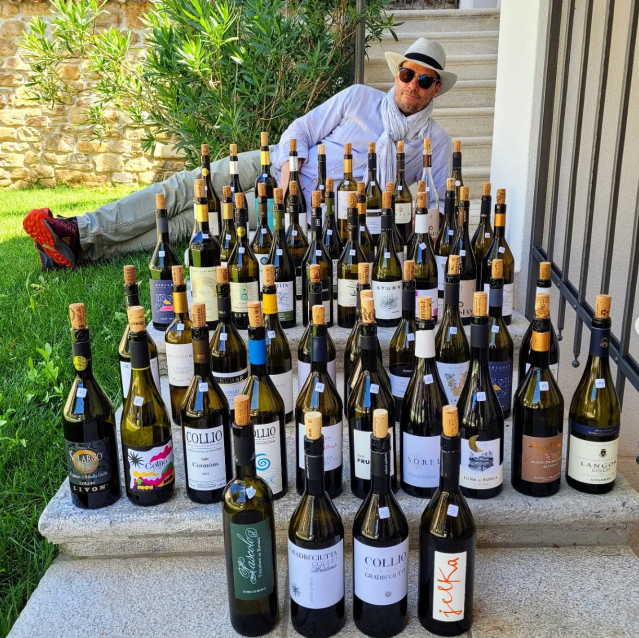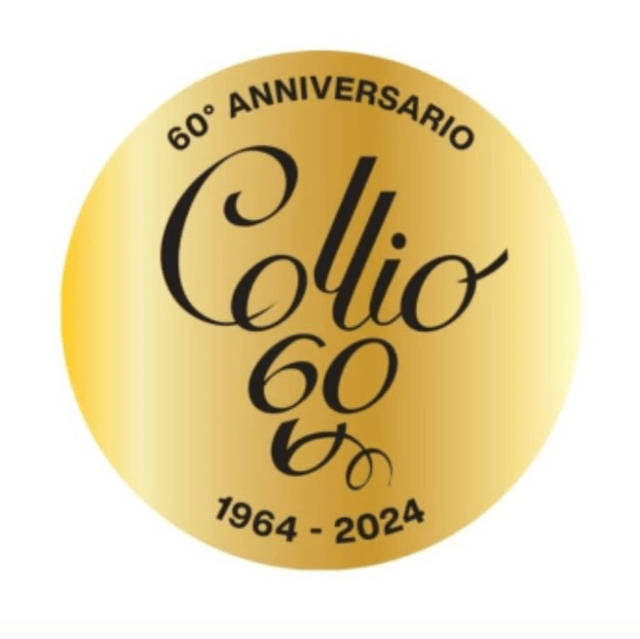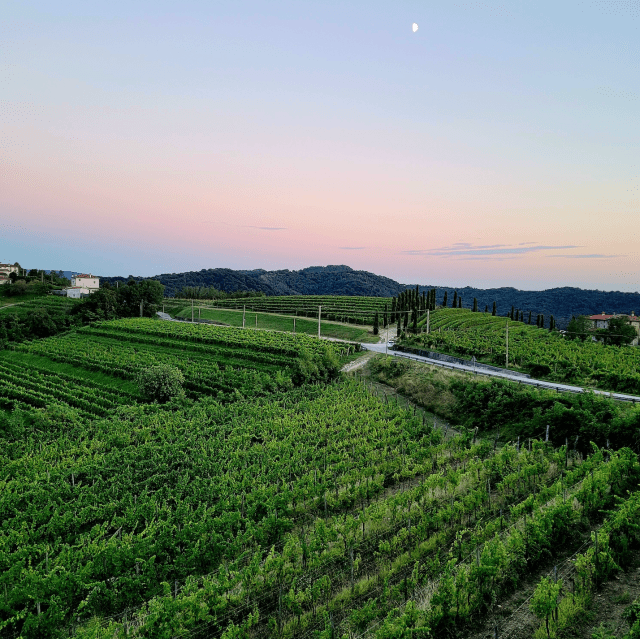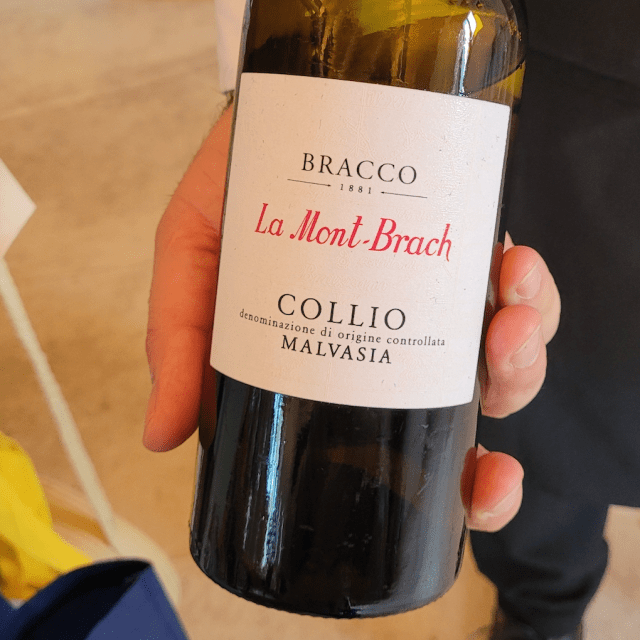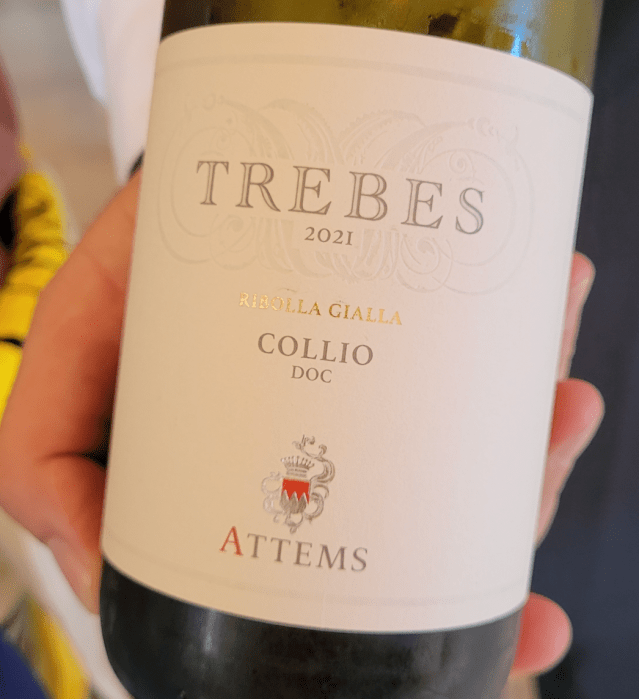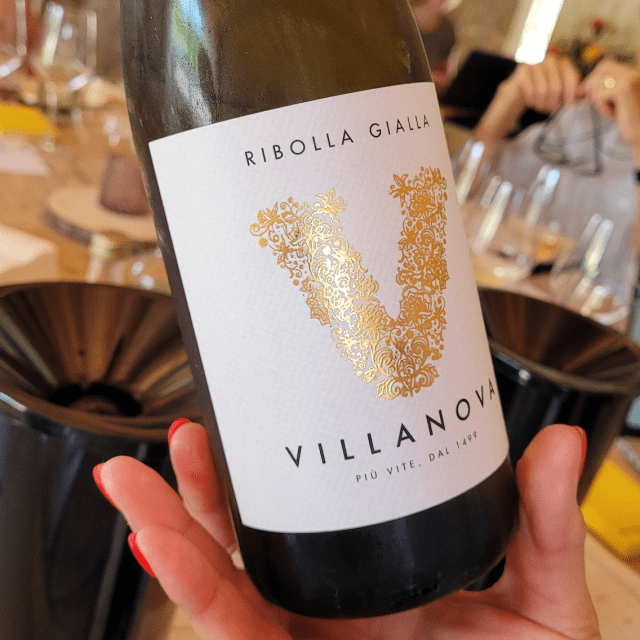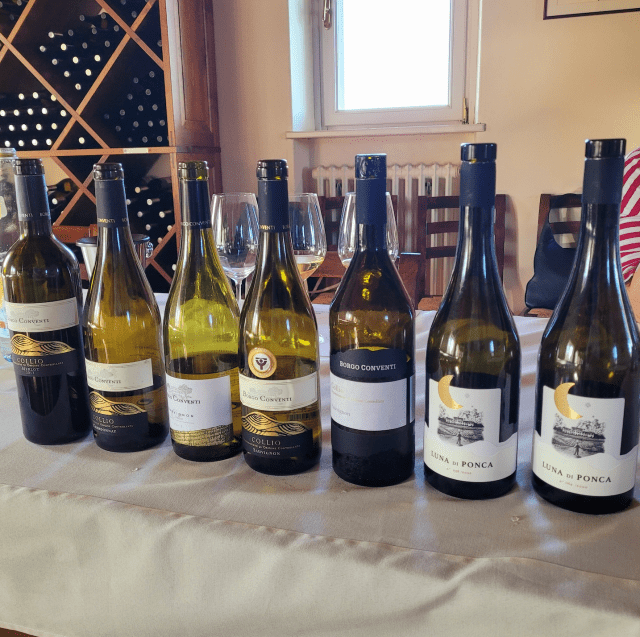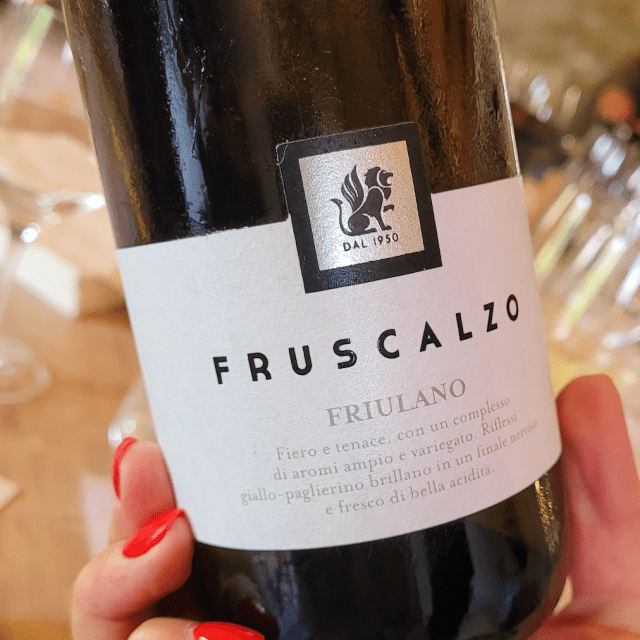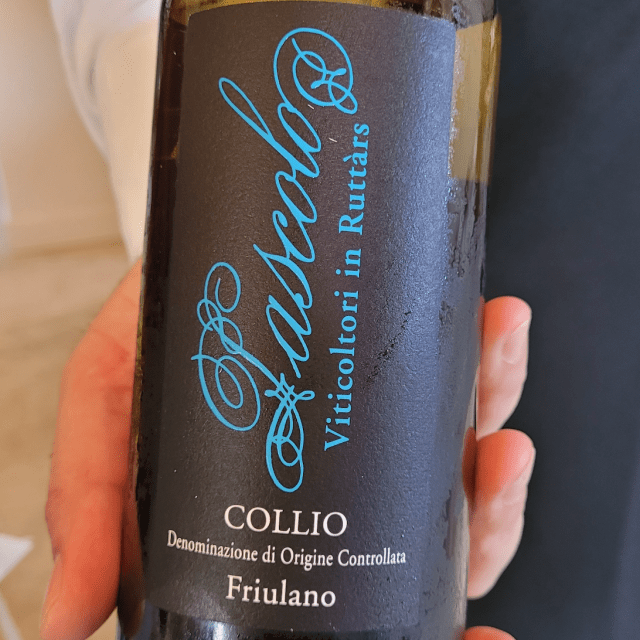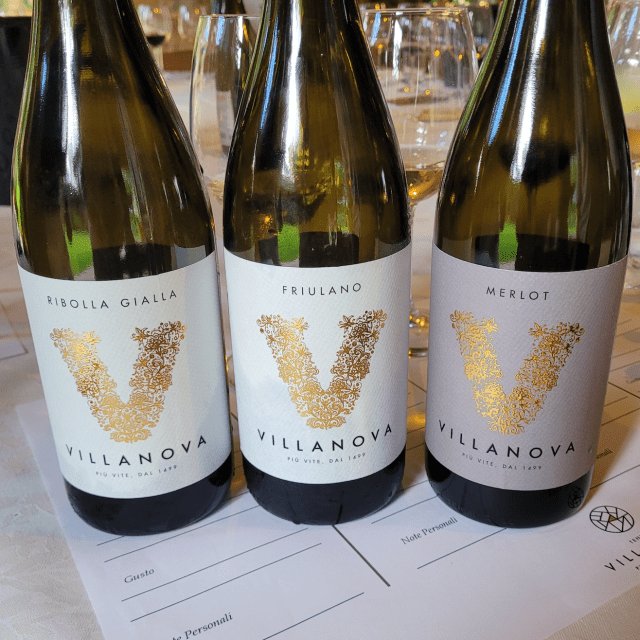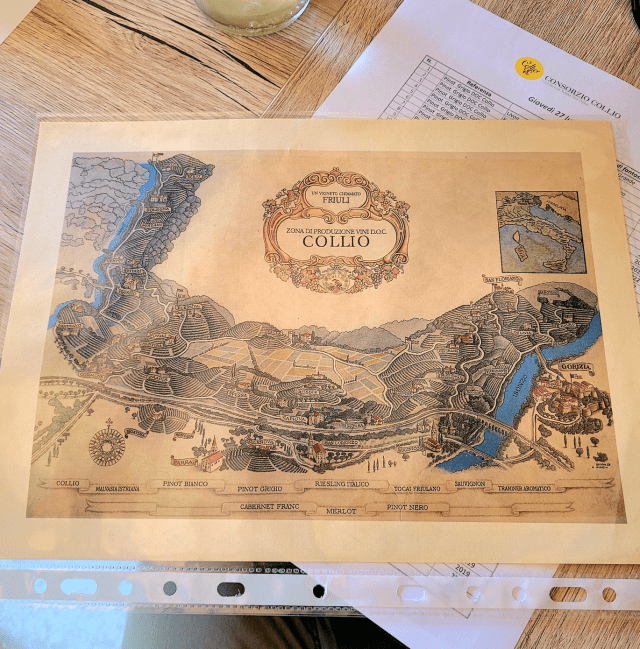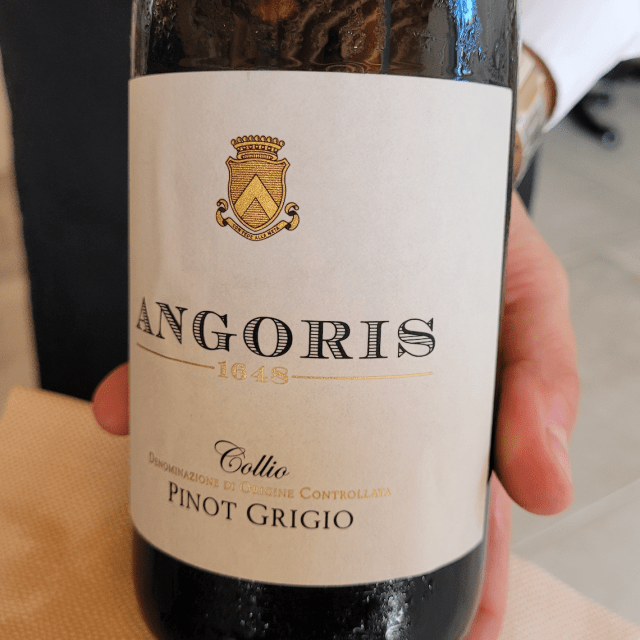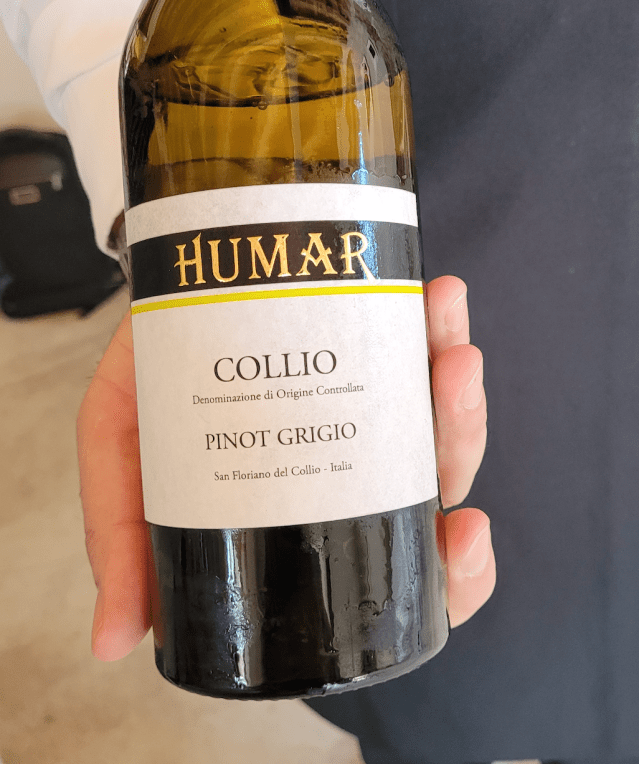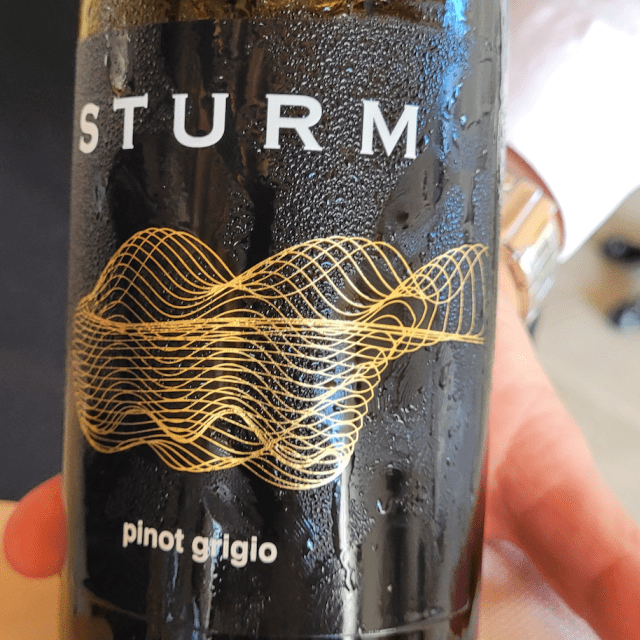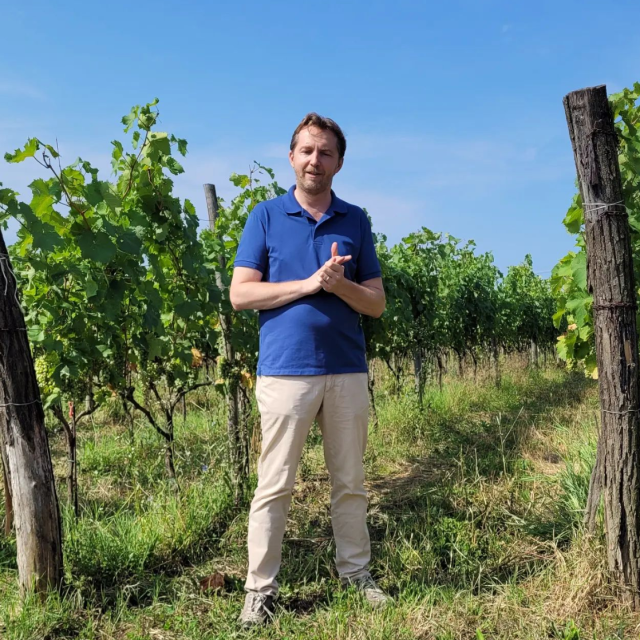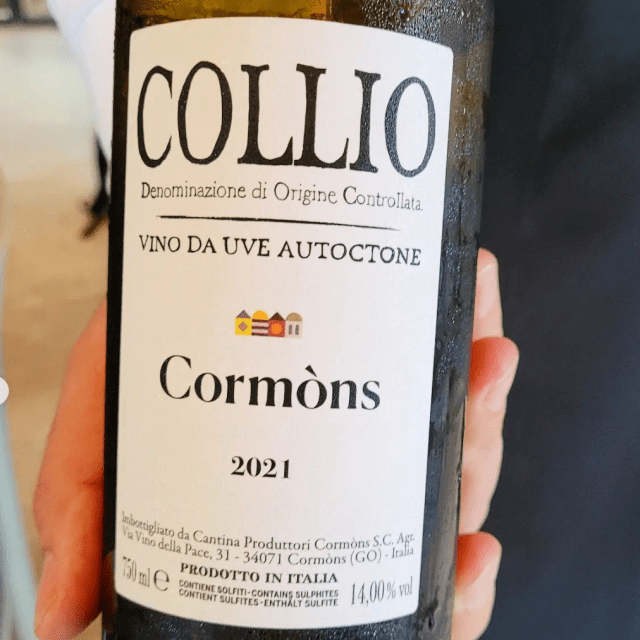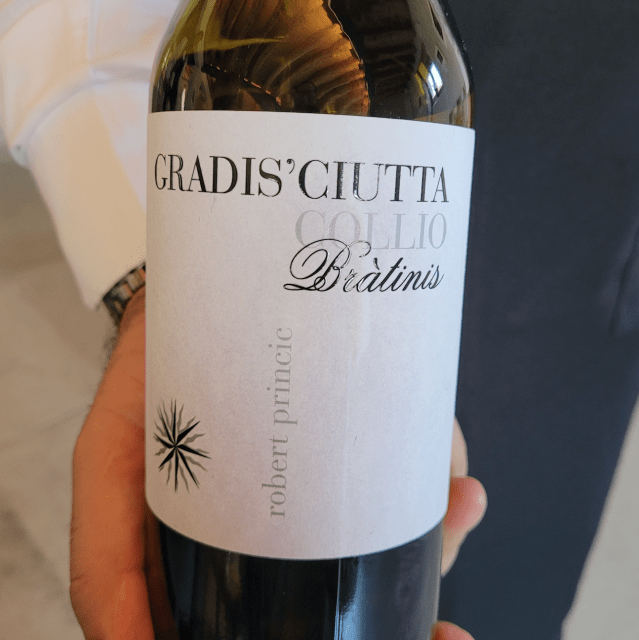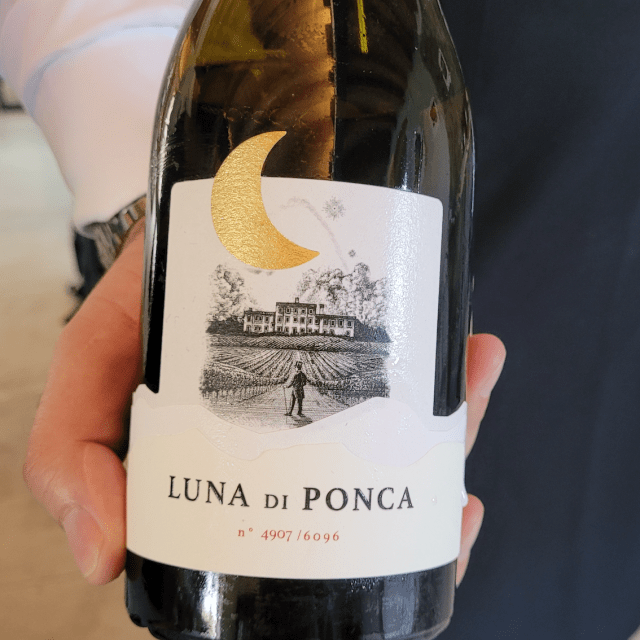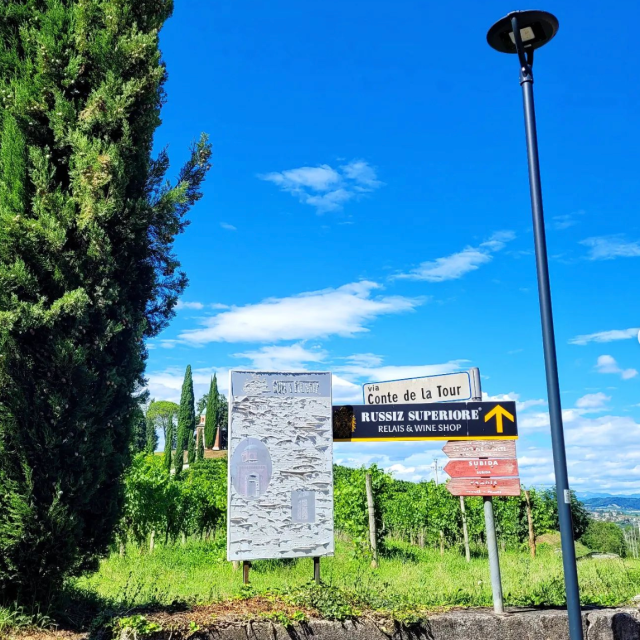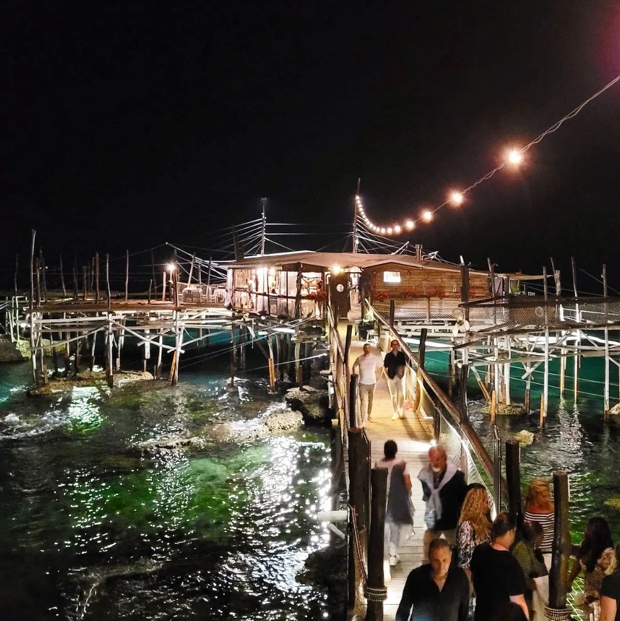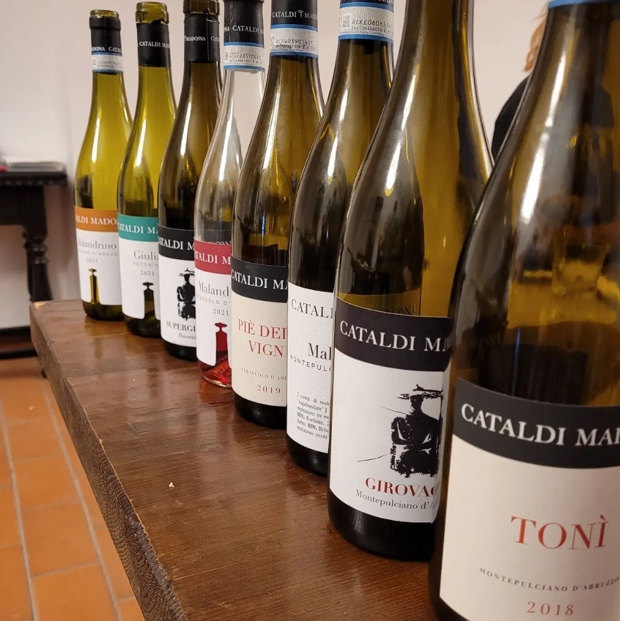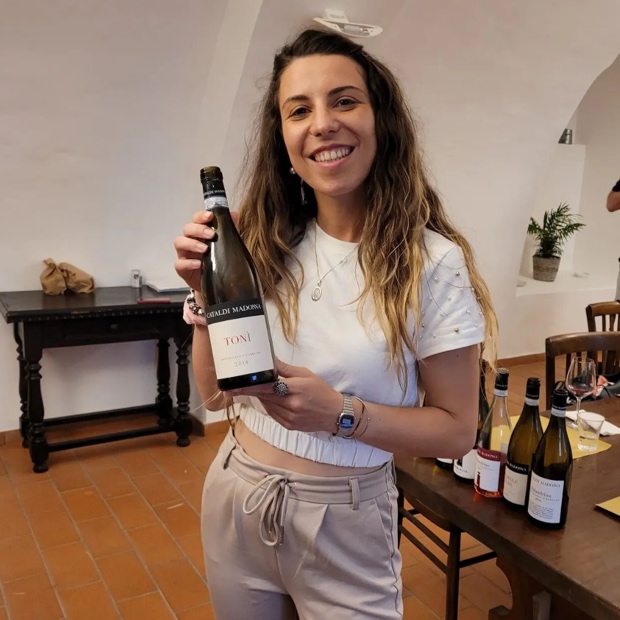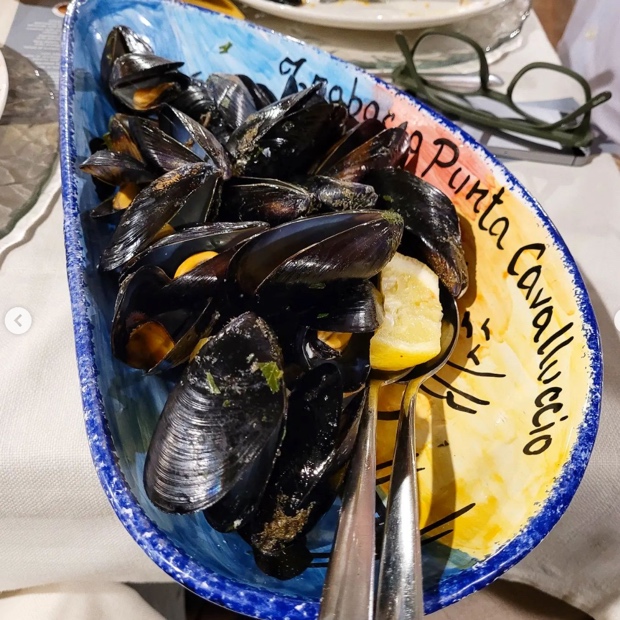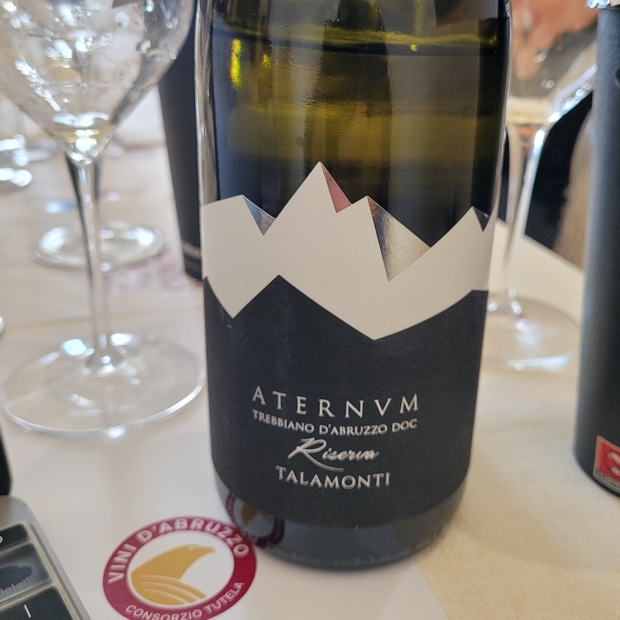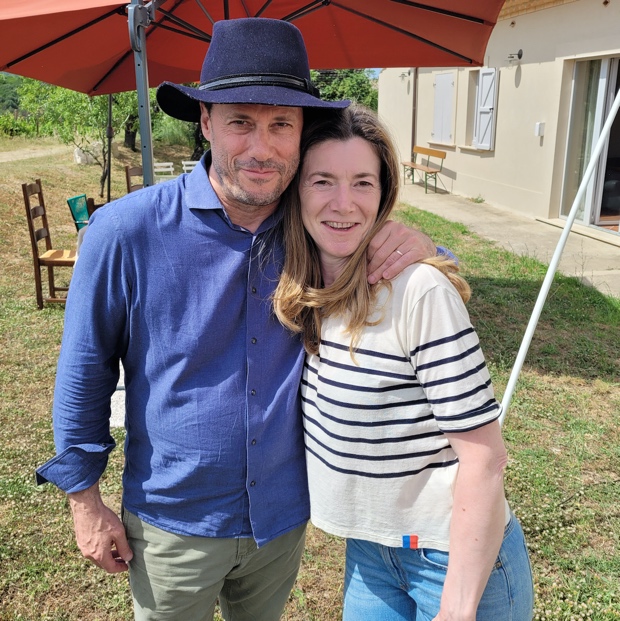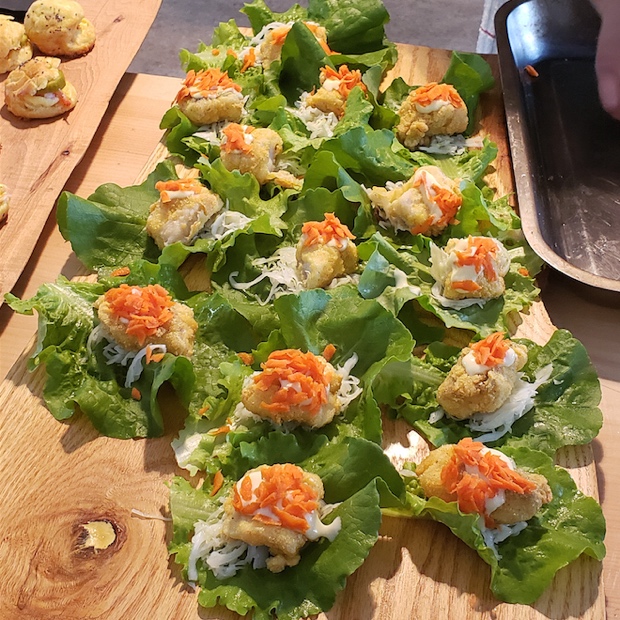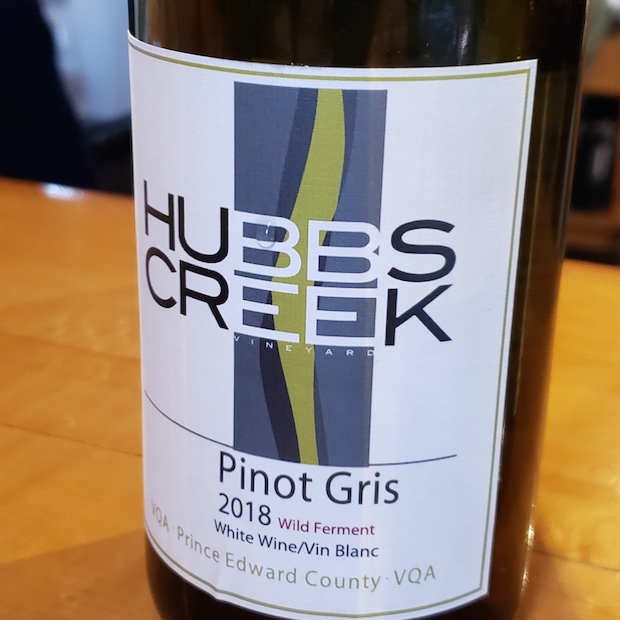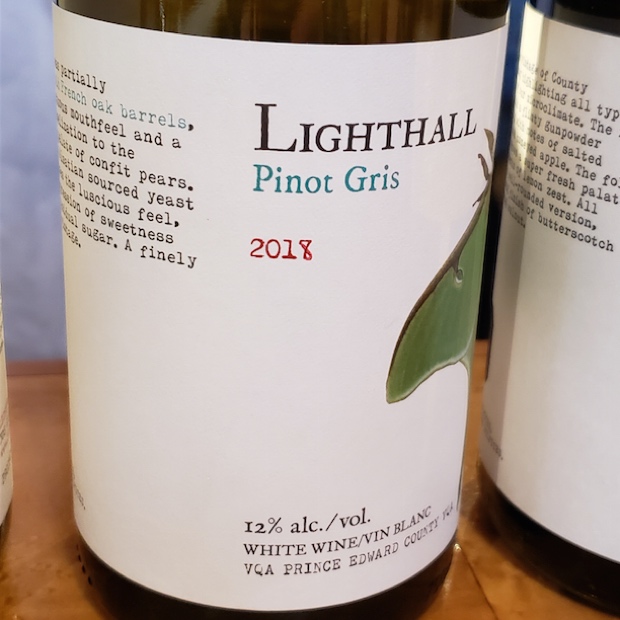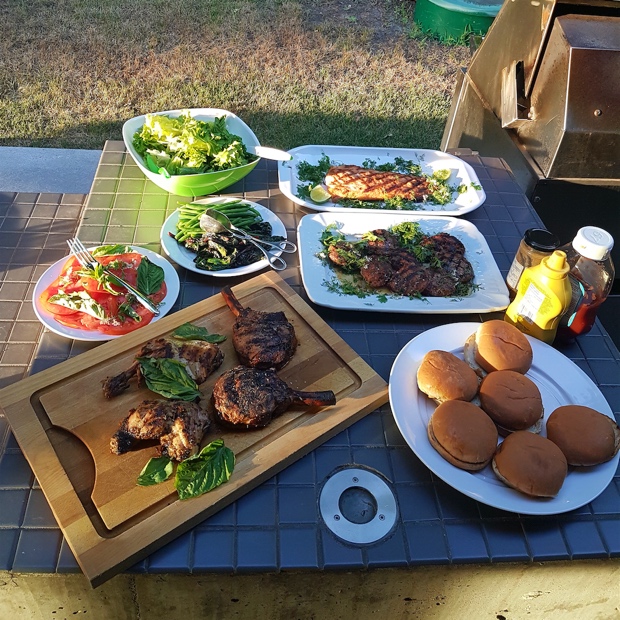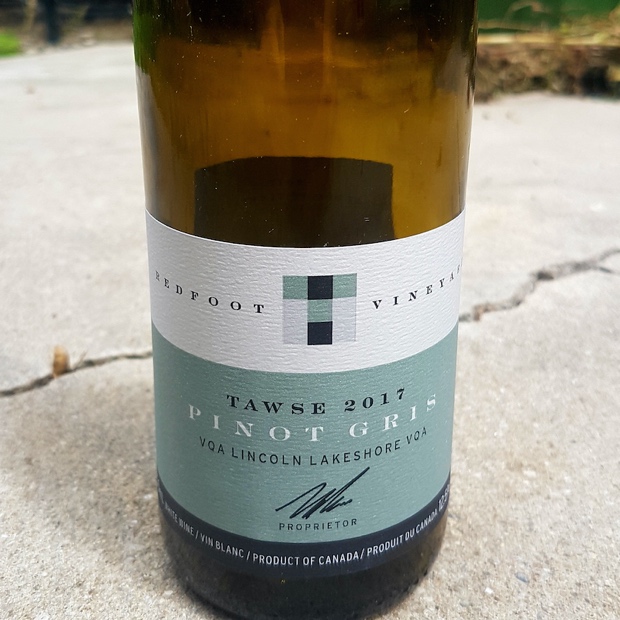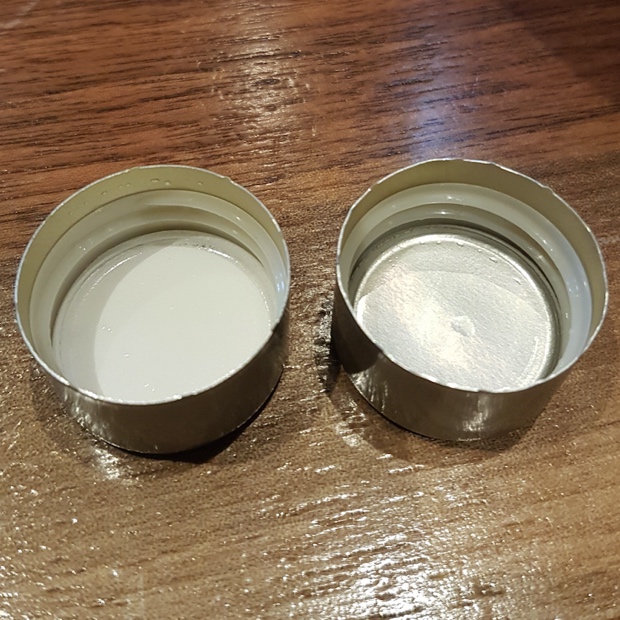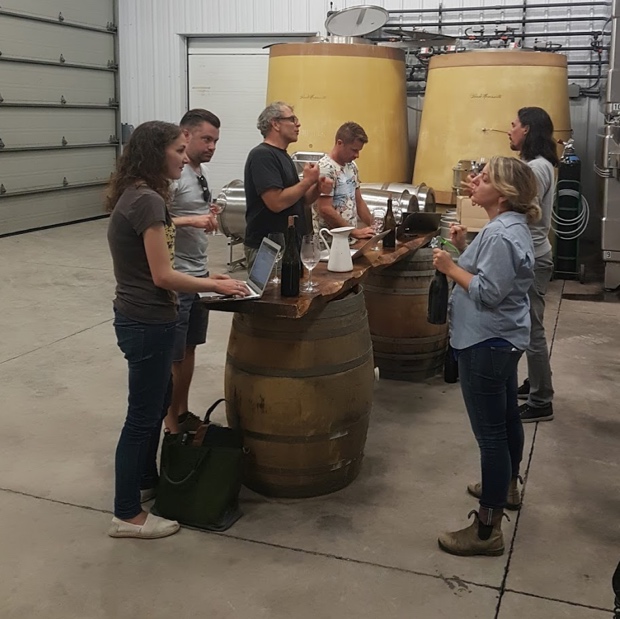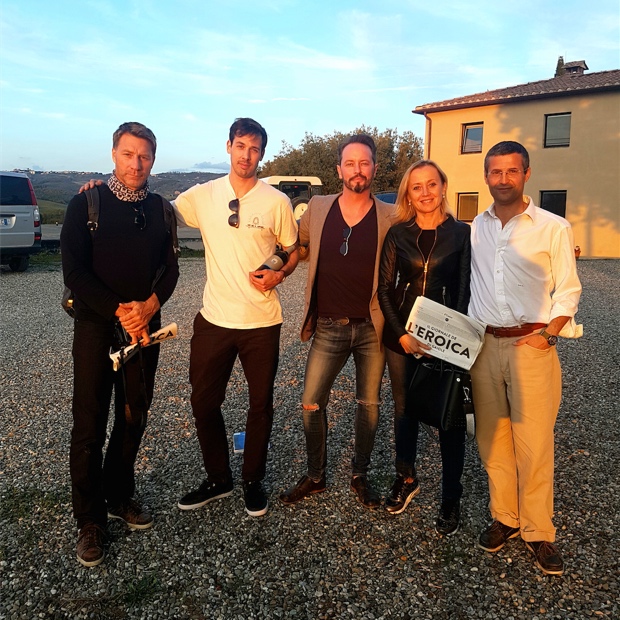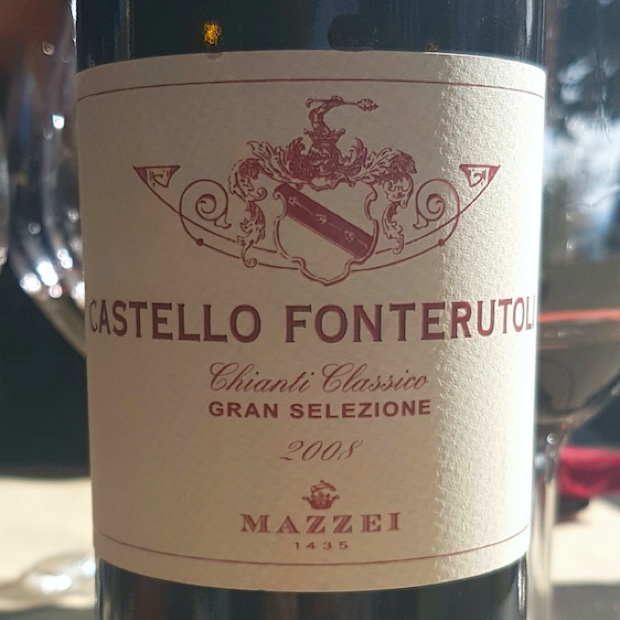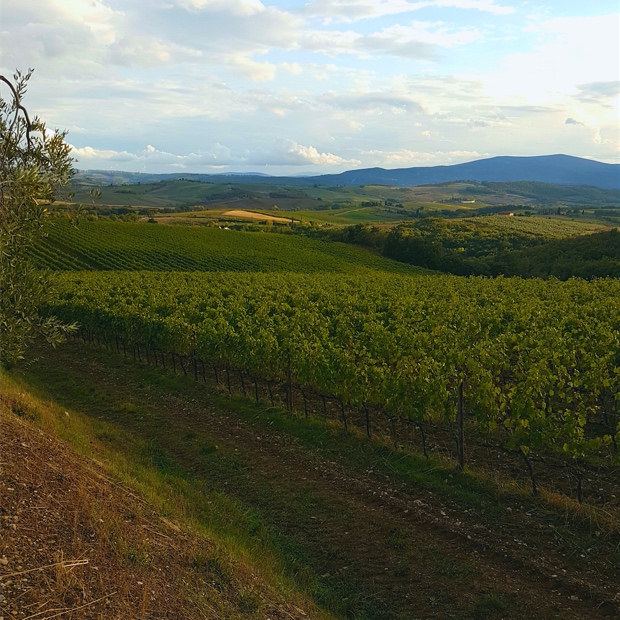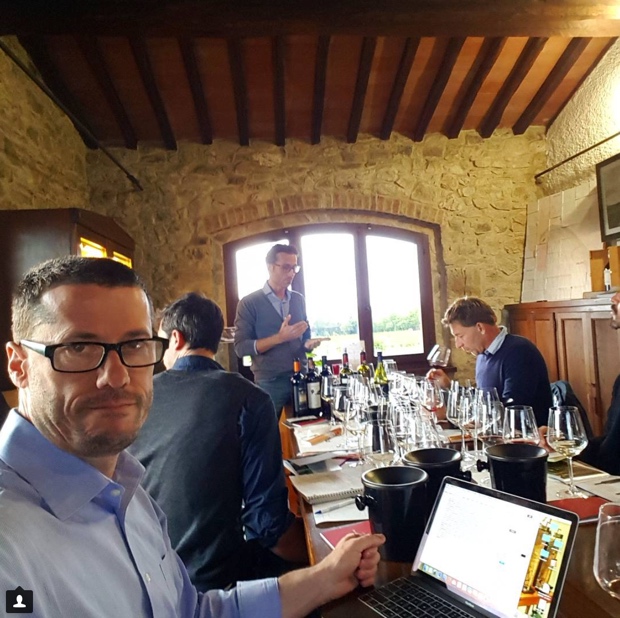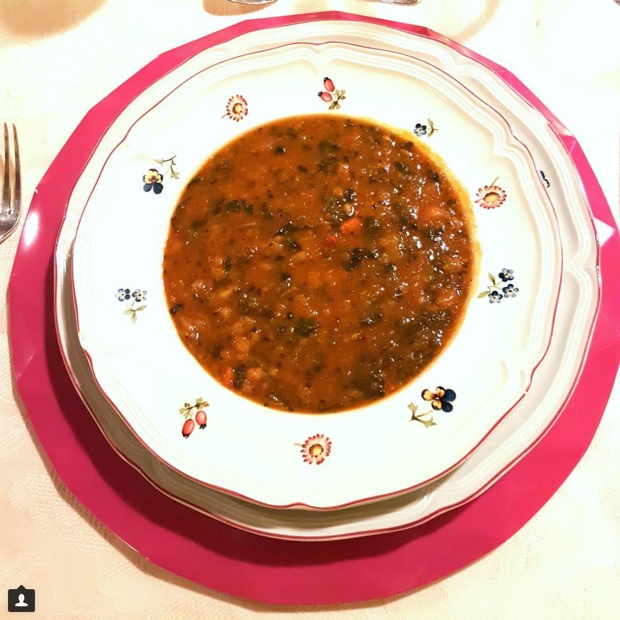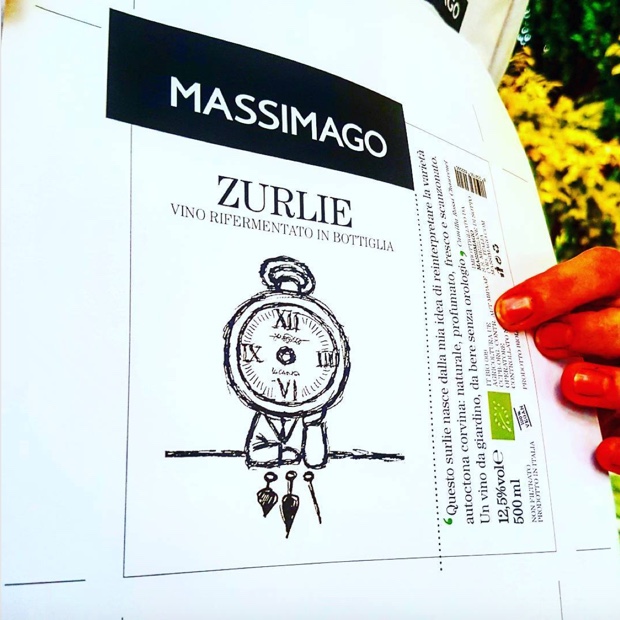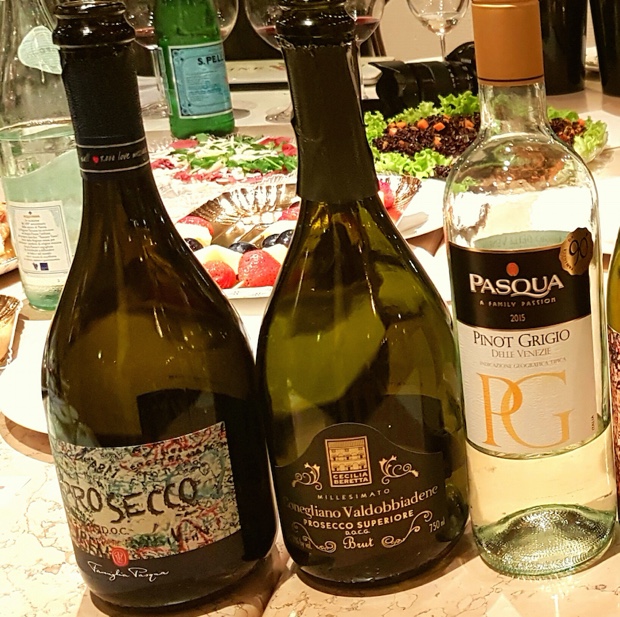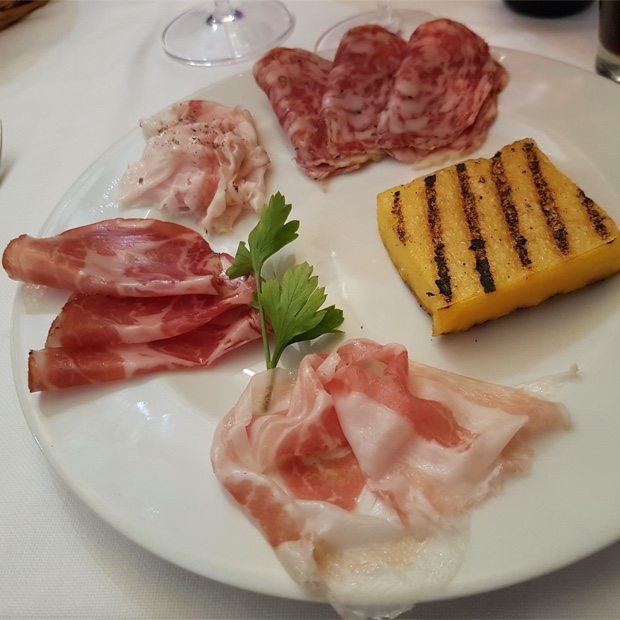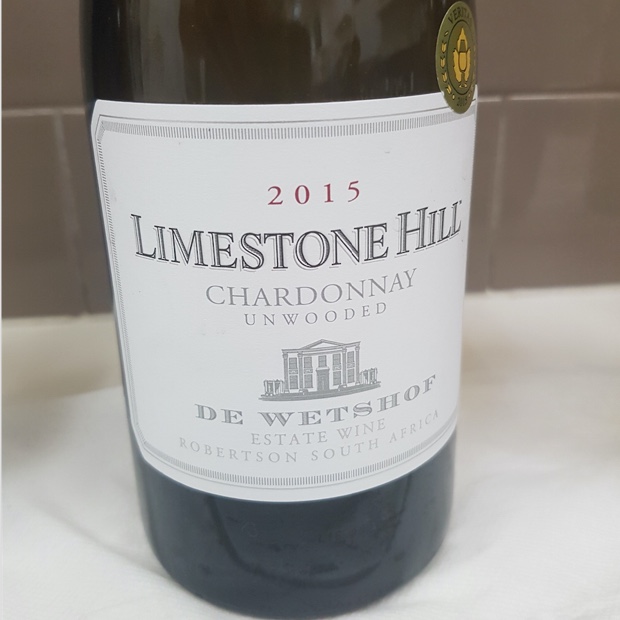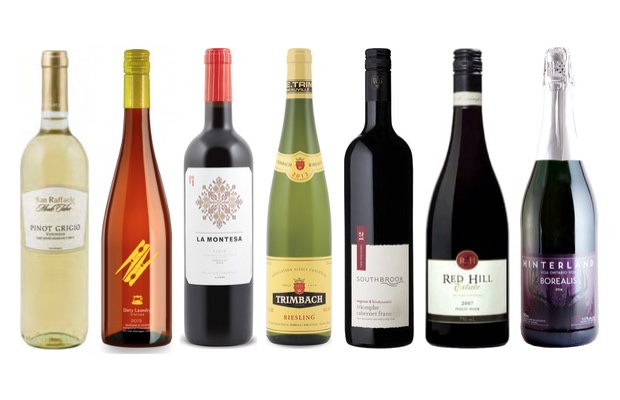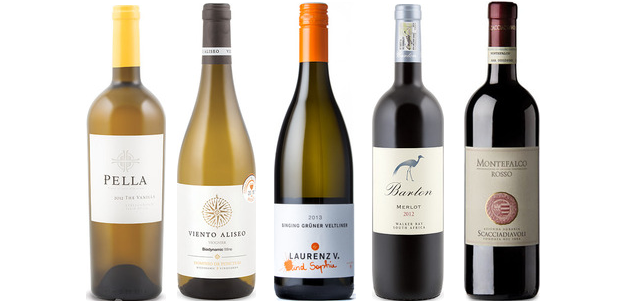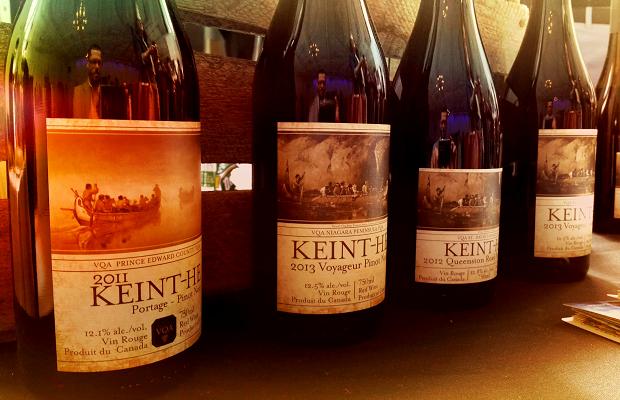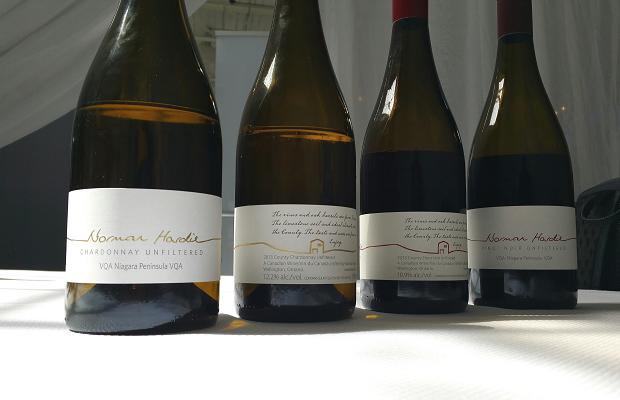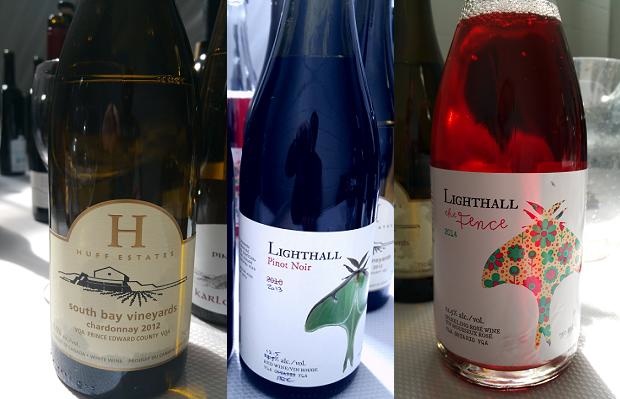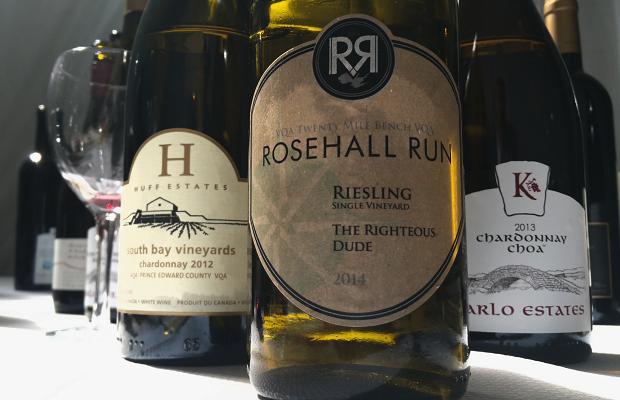The year 2024 will mark the 60th anniversary of the Consorzio Tutela Vini Collio. This important milestone of commitment, promotion and valourization of Collio wines and territory will surely be well celebrated. Last July I returned to the northeastern Italian wine region bordered by Austria, Slovenia and the Isonzo River. The Collio DOC vineyards must be on hillsides to qualify for appellative status and these sites on Ponca terroir are what separate the Collio wines from Friuli as a whole, but more specifically the most proximate DOCs of Friuli Colli Orientali and Friuli Isonzo. It takes its name from Friulian dialect, from a particular sandstone with alternating layers of marl, the composition of which originated millions of years ago. The low-level organic (but rich in mineral elements) Ponca is coloured blue-gray beneath the earth’s surface but turns yellow-brown after exposure to air. The mix of of marl and sandstone can be equated to Flysch and many producers prefer this less parochial term to describe the unique geology.
I had previously visited the hills of the Collio DOC in late spring of 2019, in are area but one to a few kilometres from Slovenia and also Adriatic coast. It’s no wonder that its white wines are highly aromatic and unique to a shared concentration of mito and geography. They stand alone in European character from out of soils variegated by sand, clay and rock to give them their distinct personality. What is certain about Collio wines is their distinctive phenolic quality. They are intrinsically tied to their villages which dot the landscape that forms a half-moon around Slovenia, though with not a lot of variety in the soils. Climate is highly variable however and if a line were drawn from east to west you would pass from warmer to cooler.
Chardonnay and sauvignon are grown to the west, ribolla gialla to the east, malvasia and friulano in their particular pockets and pinot grigio everywhere. The overall territory’s connectivity encourages the production of appellative blends. I for one have made new space for them. Collio is in fact one of Europe’s most fascinating wine regions, a white wine specialist located in the Gorizia Hills of the Friuli-Venezia Giulia region. The amphitheatre of Collio vineyards follow a line along the western border of Slovenia in the northeastern corner of Italy. It is here where centuries of a mélange of multicultural histories meet in a venn diagram of multifarious Italian, Slovenian and Austro-Hungarian mythology.
The 2023 July visit began at Castello di Spessa in Capriva del Friuli. There are places that alone express the deep historical and human value of a territory. The Spessa Castle is one of those places and Collio is that territory. Dinner with the board of Consorzio Tutela Vini Collio took place at Tavernetta al Castello.
The first full day at Borgo Gradis’ciutta was introduced by PromoTurismo FVG, followed by a Collio DOC tasting that led by Richard Baudains that focused on native grapes; Ribolla Gialla Collio DOC, Friulano Collio DOC and Malvasia Collio DOC. Dinner with the producers took place at Locanda all’Orologio in Brazzano di Cormòns. The second day focused on three more DOCs; Pinot Grigio Collio DOC, Sauvignon Collio DOC and Collio Bianco DOC. Lunch followed at Hosteria da Monia and dinner with producers at Casa delle Rose winery. We paid estate visits at Tenuta Villanova, Tenuta Borgo Conventi, Villa Russiz and Gradis’ciutta.
Richard Baudains is THE master Collio educator. “Go inside the area and the tradition and don’t worry so much about the grapes,” tells Baudains. Cuvées or field blends can fall within the DOC, or not. There are a total of 1,500 ha planted, as opposed to 1,700 in Soave and 1,900 in Macon and a production of 6.5 million bottles, as opposed to 10 in Soave. This is an indication to lower yields and significantly so. In fact it represents 11 per cent of Friuli-Venezia-Giulia and three per cent of total Italian production. There are 16 DOC mono-varietals and two DOC blends. More than 95 per cent are white wines, made by 350 growers, 180 bottlers and one cooperative on an average 4.0 ha of planted space. The lead is pinot grigio at 26 per cent, followed by sauvignon (19) and friulano (15). The latter endemic grape declined dramatically and was in fact at 50 per cent just a couple of decades ago. The rest include ribolla gialla (7.5), chardonnay (9), pinot bianco (4) and malvasia (2.5).
In May 2019 I tasted through upwards of 100 examples of various Collio DOC with nine “neighbourhoods” as their collective source; Brazzano Di Cormòns, Capriva Del Friuli, Cormòns, Dolegna Del Collio, Farra d’Isonzo, Gorizia, Mossa, Oslavia and San Floriano del Collio. Sauvignon and Collio Bianco were most concentrated upon. In July of 2023 we began with those two wildly diverse first Consorzio Collio tastings led by the legend Baudains. The tastings were well orchestrated by our Sommeliers, the Consorzio’s Lavinia Zamaro and La Fede, a.k.a. Federica Schir. On this trip I tasted 116 examples of Collio DOC (and two Venezia-Giulia IGT). They are broken down as follows: (10) malvasia, (12) ribolla gialla, (23) friulano, (22) sauvignon, (22) pinot grigio, (17) Collio Bianco, (10) other varieties and (2) IGT. Here are the notes.
Malvasia
Bracco 1881 Malvasia La Mont-Brach 2021, Collio DOC
Classic malvasia really, from a cool site, lemon-waxy, beeswax mainly, tang, tart edginess and fine bitters. Spice and incense. Clicks every box on the expected varietal list and the length here is quite good. Picks up steam and fleshes well. Drink 2023-2026. Tasted July 2023
Gradis’ciutta Malvasia 2022, Collio DOC
Curious how both ribolla gialla and friulano by Gradis’ciutta are open-knit, airy and fast friendly while malvasia is more closed and demure. Fulsome on the palate however and silky, cool, herbal and then finishing with drifting downy softness. Bitters arrive right at the finish. Drink 2023-2025. Tasted July 2023
Livon Malvasia Soluna 2021, Collio DOC
Anything but showing as a shy variety in this Soluna by Livon, sharp of tang and keen of spirit. Intensity of lemon in every which way but loose. Lots of finishing pith. A bit over the top. Drink 2023-2024. Tasted July 2023
Pascolo Malvasia 2022, Collio DOC
Quietly confident malvasia from Alessandro Pascolo with an immediately gratifying set of aromas bred and bled from the vineyard mixed with winemaking for great compliment. Clean lees create a positive lactic effect while the flavours are traditionally sweet and sour. Lots of wine here, some waxiness and smoulder, intensity and drive. Drink 2023-2026. Tasted July 2023
Podversic Malvasia 2019, Collio DOC
Long maceration on the skins much like the ribolla gialla and the friulano, as is Damian Podversic’s house style. Most pronounced with this grape and does in fact stifle the aromas while elevating the salve effect, tannic presence and intensity on the palate. Big wine from beautiful grapes and yes, this style is his reason for being and making wine. Salty (with caramel) to a wild degree with forest brush all throughout. Drink 2023-2026. Tasted July 2023
Pighin Malvasia 2022, Collio DOC
So much more flesh in malvasia, both on the nose and the palate, especially in an example that gathered this much sun and achieved admirable ripeness. This is how it Pighins, with juicy lemon and then flavour intensity, finishing at fine beliers and saltiness. Accessible and professional. Drink 2023-2025. Tasted July 2023
Subida di Monte Malvasia 2021, Collio DOC
Surely the most reductive of the malvasia and a barrel style to imagine flint, paraffin and mineral smoulder. Quite successful in this regard, ambitious perhaps and working the glass with diligence for great effect. Bitters and tonics, grip if controlled with its intensity in near perfect tact. Wood (tonneaux) needs to melt and settle in. Drink 2023-2025. Tasted July 2023
Tenuta Stella Malvasia 2021, Collio DOC
In line with Stella’s ribolla gialla and also friulano in which a whole lot of wine and complexity hides behind the curtain of sauvage and stinky cheese. As malvasia it’s surely unique, curious and a taste that most would consider acquired. Goat hide and wild flavours of make us want more and the wine creates a true salivation of the palate. If only the yeasts were got under control. Drink 2023-2025. Tasted July 2023
Villa Russiz Malvasia 2021, Collio DOC
Five months have wrought wonders on the ’21 malvasia which now expresses itself with not just clarity but great spirit. A force of varietal nature and right in the proverbial zone, fresh, dancing, full and bursting with intensity. Last tasted July 2023
Though the history of malvasia and Collio is long and storied the number of producers bottling the grape as a solo artist and not in Collio Bianco is dwindling from year to year. The grape is indeed an ambassador of the denomination and can effect wonders in the bottle. This comes from a purposeful to potentially profound vintage and you can really feel the gravitas in the density and volumetric properties of this unique white wine. The relationship between place and variety takes it where nowhere else does, into extra viscosity and unction, limpid waters where texture enriches and enlivens the liquidity of the wine. Note the booziness (at 14.5 per cent) and the low yet notable level of residual sugar. Fulsome and all in, in the end. Drink 2023-2026. Tasted February 2023
Vosca Malvasia 2022, Collio DOC
Chewy malvasia with more phenolics and bitters up front. Steady and of a continuance to palate with notes on repeat. Quite metallic and sapid. Higher pH no doubt. Drink 2023-2024. Tasted July 2023
Ribolla Gialla
The Ribolla Gialla is probably the only truly local variety, first cited in 1299. Thick skinned, low sugar, high acidity, late picked and prefers the higher, stony sites. Has lost favour because of competition by sauvignon but it’s under a revival. Even some experimentation in sparkling iterations. Hardy and vigorous, later budding and so less prone to frost. Sugars move slowly and acids remain forever. For the variety there are 100 bottlers, 1300 hectares which makes the average holding only 13! The largest is approximately 40.
Attems Ribolla Gialla Trèbes 2021, Collio DOC
Owned by Frescobaldi, warm site and early picked. The first and likely most reductive of the first 10 ribolla gialla, a bit mephitic to be honest and agitation is necessary. Lots of fine wine behind the veil, intense, implosive, layered and stony. The most mineral driven expression and a wine to attract a very specific crowd. Drink 2023-2026. Tasted July 2023
Cantina Produttori Cormòns Ribolla Gialla 2022, Collio DOC
Cool, gelid, stoic, even serious ribolla gialla. The citrus is not so much preserved as it is like savoury lemongrass gelato, less aromatic and also no sweetness but just gives the feeling of being satiny and cold. No lees, malolactic or obvious complexity. The grace and elegance are noted but also less risk, middle road taken, solid varietal weight and effect overall. Drink 2023-2025. Tasted July 2023
Castello Di Spessa Ribolla Gialla Yellow Hills 2021, Collio DOC
From Capriva di Friuli and one of the oldest family-run wine companies in the Collio DOC. There are 30 hectares in Collio and 70 in Isonzo DOC, split between Capriva and Cormons. A varietal ribolla gialla that speaks to the colour of the hills when the grapes are golden at harvest. Stays on the lees until March, is then racked off and put to bottle where is remains for a further nine months before release. Lees but a resolved, mature and sweetly fruit integrated one. Phenolic though again maturity in that regard so no metallic or botanical sensation derived. More than enough freshness, a nutty quality because of the aging and also a finish part lemon waxy and part herbal. Drink 2023-2025. Tasted July 2023
Gradis’ciutta Ribolla Gialla 2022, Collio DOC
An aromatically floral ribolla and also one at the higher end of the phenolic scale. Quite an alloy of cool, sapid-licked slick of sensations derived. Less lemon and more lemongrass and so here is a wine to pair so well with Vietnamese cuisine. Drink 2023-2025. Tasted July 2023
Humar Ribolla Gialla 2022, Collio DOC
Cooler feelings and herbal, preserved lemon and aromatic texture. Balance and full connect between aromas and flavours, slick and silken, nothing out of whack and seamless integration. Nothing overt or standing out but it is this togetherness that sees all parts working as one. Drink 2023-2025. Tasted July 2023
Livon Ribolla Gialla Roncalto 2022, Collio DOC
From a cooler site near to Slovenia. The least intensity in terms of aromatics, reticent in a way and yet unleashed. Different story on the palate with a real sour lemon flavour and intensity of tang. Out of balance in more than one regard. Drink 2023. Tasted July 2023
Podversic Ribolla Gialla Damijan 2019, Collio DOC
Age and maturity come quick to ribolla gialla and combined with 30 days skin contact in maceration makes for a golden orange wine. Classic tisane, part orange citrus and part aromatic tuber. Add in the aging inside big 25 hL barrels leading to a softness but also a fullness of texture. This is ribolla gialla in confident balance, clean, sure and respectful of itself and those who drink it. Not really an orange wine at all and were it considered in the genre, well it would surely be a top example of that, with nary a moment of oxidation or volatility. Drink 2023-2026. Tasted July 2023
Tenuta Borgo Conventi Ribolla Gialla 2022, Collio DOC
Some more colour and even later picked maturity than the average ribolla gialla. Carries texture and weight into a deeper feeling as well, still a metal sensation but not nearly as phenolic as some, seemingly counterintuitive but there it is. Well judged and executed example in the face of hanging long and pressing with fervour. Drink 2023-2025. Tasted July 2023
Tenuta Stella Ribolla Gialla 2021, Collio DOC
Natural fermentation, 15 days maceration on the skins, cellar temperature, aged in old tonneaux. Some funky lees noted off the top, like crème frâiche and aging citrus. Minor TCA. Palate emits a minor bacterial note. Nothing egregious but present nonetheless. Tasted July 2023
Tenuta Villanova Ribolla Gialla 2022, Collio DOC
No wood, only stainless steel and like all Collio wines they remain on the lees for a couple of months longer than those of Isonzo. Does not get much fresher or palate cleansing than Villanova’s, from clay soils gifting aromatic balance, shared affinities between florals, lemon drop citrus, phenolics and what clean lees are want to deliver. The lovage herbal note is sweetly pungent though the transition to palate changes with more intensity than expected. The flavours are favourable and potentially memorable. Some sweet and sour mix and then the metallic note so prevalent in Collio. Des there is an extra layer as compared to Isonzo, namely because the two hills where the grapes are grown are layered with stratified-stony Ponca soil, unlike the clays of the Isonzo plains that surround them. Really satisfying wine. rink 2023-2025. Tasted July 2023
Villa Russiz Ribolla Gialla 2021, Collio DOC
Confident and concentrated ribolla gialla, layered and full of complimentary but also supportive parts. Fruit and stone in cohorts, minor reduction and major texture. Maximum ripeness for the grape. A wine that surely celebrates place. Feels like the top single varietal expression for the house. Drink 2023-2026.Tasted July 2023
Vosca Ribolla Gialla 2022, Collio DOC
More aromatics here in a complex olfactory weave of citrus, sweet herbs and marine saltiness. Feels earlier picked and the acidity confirms this notion. Definitely the crunchiest and saltiest example if a bit of extra lees and or malolactic quality felt as well. Drink 2023-2024. Tasted July 2023
Friulano
Then there is friulano, the opposite of ribolla gialla, thin skinned, low acidity and not fussy. Will grow anywhere. Harvest gap times are much wider and yet a wet September can be challenging. In dry conditions it will usually hang well into September.
Branko Friulano 2022, Collio DOC
From Igor Erzetic who changed the old vines over to Guyot in 2005, five years after taking over the vineyard. His father was Branko and the varieties cultivated are chardonnay, pinot grigio, sauvignon and this friulano. Use of wood is for seasoning, not for “dominance.” Igor is looking for mineral and especially sapidity, but in the end he is happy with harmony. His 2022 is fully phenolic, botanical, sapid and savoury. So very friulano. Drink 2023-2025. Tasted July 2023
Cantina Produttori Cormòns Friulano 2022, Collio DOC
A bit of funky lees on the cooperative’s friulano, unexpected because their wines are usually squeaky clean. Lemongrass, pungency of herbs and yogurt are there, followed by some lemon sherbet and a soft mouthfeel. Slides away slow and easy, finishing with true sauvignon-esque style. Drink 2023-2025. Tasted July 2023
Castello di Spessa Friulano Rassauer 2021, DOC Collio
Doesn’t get much more phenolic than this grippy aromatic friulano from Castello di Spessa in Captiva del Friuli and ripeness is clearly one of its virtues. Tasted blind and with the white pepper shakes this could be grüner veltliner, in particular from the Wachau. Lots going on here in a varietal wine that speaks to low yields, proper hillside plantings and attention to detail. Drink 2023-2026. Tasted July 2023
Draga Friulano Miklus 2018, Collio DOC
Five years is long enough to get a sense of what aging friulano can bring to the table and the Miklus by Draga tells a winding, evolving and fascinating story. Perhaps some botrytis here, noted in the saffron and the preserved lemon plus much more wood aging put this in an entirely different ethos. Drink 2023-2025. Tasted July 2023
Fantinel Tenuta Sant’Helena Friulano Rijeca 2022, Collio DOC
Some maturity here and not perfectly clean fruit. Shadowy mephitic and lean. Not correct. Overly bitter and also tannic. Tasted July 2023
Fruscalzo Friulano 2021, Collio DOC
From the village of Ruttars in the municipality of Dolegna del Collio. Waxy, in fact the first of its ilk when you’d expect so much more but Collio friulano is not truly of the paraffin kind. Salty, with botrytis-induced saffron but also a good flavoured Solvenian salt. Tart but in control and all the while built with fine bitters to bring it all together. Drink 2023-2025. Tasted July 2023
Gradis’cutta Friulano 2022, Collio DOC
More fleshy accumulation and later picked ripeness gained for credibility in the Gradis’cutta friulano and without hesitation. Streak of mineral salt and simply balanced throughout. Textbook friulano, clean, refreshing, neither too lean nor too fat. Drink 2023-2025. Tasted July 2023
Humar Friulano 2022, Collio DOC
Old vines, good site. Lemon in so many ways dominate the nose, drops of candy, juice and a phenolic grip by the pith. Full and even expansive on the palate, fatter and creamier than most Collio friulano. Good acid here as well so there really is a lot going on, perhaps needing a few more months to integrate and come together. Tannic and proper, not technical and with plenty of potential. Drink 2024-2027. Tasted July 2023
Kurtin Friulano 2021, Collio DOC
Most interesting aromatic profile, the first to bring about key lime and sweet basil. The cool gelid feeling begins here and carries over to the palate. Tonic and salty character in a balanced wine that is surely indicative of a vintage’s promise as evidenced by the seamless transitions in the wine. Drink 2023-2026. Tasted July 2023
Livon Friulano Manditocai 2021, Collio DOC
Single site, cru or just fantasy name but regardless you can feel the concentration on the nose. Pencil lead, wild fennel and other savoury to brushy elements make this stand out from the pack. The wood could use just a bit more integration but it will get there. Salty, lemony and intense palate with linearity and length. True vibrancy and the fine bitters really tie it all together. Manditocai means “bye-bye tocai.” Cheeky. Drink 2023-2026. Tasted July 2023
Pascolo Friulano 2022, Collio DOC
A cornerstone of Alessandro Pascolo’s production, the anchor in his Collio Bianco and here what feels like much of his most important varietal fruit. Equally aromatic and playful on the palate, dancing as friulano should for energy and refreshment. Clean and caught in just the right moment between linearity and fleshiness. A few grinds of white pepper and really great length. Top example. Drink 2023-2026. Tasted July 2023
Pighin Friulano 2022, Collio DOC
Clean, fresh, lemony and open-knit friulano with every moment intent on thirst-quenching, satisfying and refreshing feelings. Just that most minor finishing hint of phenolic grip and white pepper but this is a fleshy and “grasso” friulano. Drink 2023-2025. Tasted July 2023
Podversic Friulano Nekaj 2019, Collio DOC
Longer maceration time on the skins, likely as much as 30 days and combined with a couple of extra years of age puts this in full maturity. Not as expressive and energetic as the ribolla gialla but still just as clean and without any off-putting natural funk. The salve feeling and layered tang is stronger, both a result of phenolic grip and deeper or more density of tannin. Surely stands apart from the rest. Not exactly the best grade for this style. Drink 2023-2025. Tasted July 2023
Ronco Blanchis Friulano 2022, Collio DOC
Just ever so slightly effervescent energy buzzes from the Blanchis “hill” friulano in a cool, gelid and faux sweet example. Certainly ripe and phenolic, well mad despite the hot vintage because it strikes overall accord between what could have been disparate parts. A touch of botrytis here. Drink 2023-2025. Tasted July 2023
Russiàn Friulano 2022, Collio DOC
Less open and surely not a gregariously aromatic friulano while the palate tells an entirely different story. From a closed to widely open circumstance, first shy and then dancing, tripping the tongue and expressive of many sweet, sour and salty flavours. Rijstaffel in the mouth. Drink 2023-2025. Tasted July 2023
Subida di Monte Friulano 2021, Collio DOC
From Pradis and typical as it is aromatically lean, not so much closed as not so forthright. Sapid and stoic, pH a bit higher here as well and less indicative of the vintage. More flesh and expressiveness on the palate, almost peachy but there is an unripe greenness about it. Drink 2023. Tasted July 2023
Tenuta Borgo Conventi Friulano 2021, Collio DOC
Quiet and reserved, holding back the years, perfume and tears. Crisp, clean and crunchy friulano, lean and refreshing. Part salty and part sapid, working both sides of the varietal room. Herbal and herbaceous, very much like green sauvignon. Drink 2023-2024. Tasted July 2023
Tenuta Stella Friulano 2021, Collio DOC
Spontaneous ferment, good time on the lees and then in old, large barrel. Oxidative to a degree and freedom felt through and through. Vociferous, some slightly funky lees and most certainly a naturally conceived and executed friulano with great wandering purpose. Fleshy and flighty, fanciful and full of varietal fantasy. Drink 2023-2025. Tasted July 2023
Tenuta Villanova Friulano 2022, Collio DOC
A certain aspect of typically Collio friulano stands out on this semi-aromatic front and that would be the blossom perfume, orange namely but also something from wood. Really middle road taken friulano and fleshy, of plump raisins and melon, even a hint at litchi. Could be the slightest bit of botrytis but it comes across neither sweet nor funky. Glycerin, medium-bodied, sweet acidity and concentration with thanks to a warm and hot summer. Low rainfall yet grapes were healthy and their adaptability translated to their expression and personality. A wine that is a truthful and respectful tribute to the region. Drink 2023-2024. Tasted July 2023
Villa Russiz Friulano 2021, Collio DOC
Still working through its kinks of reduction and enzymatic motions, alive, dancing and kicking. Improving with every passing moment, developing further complexities, advancing towards an end game. Just about at that moment. Last tasted July 2023
As with the kindred Bianci there is unction and viscosity dictating the character of the friulano, more so than pinot bianco yet less than the über thick and textural malvasia. This one seems to find the middle ground and glides through with more ease, gently sliding over the palate yet not leaving any salve or residual tape behind. Middle of the road is proper and good in this case when you think on things as scenarios of good, better and best. Drink 2023-2025. Tasted February 2023
Villa Russiz Friulano 2019, Collio DOC
Friulano from 2019 persists and remains in ideal tact, fruit and phenols intertwined, together, intact. The taciturn is apprised for grape variety and place, also inseparable and moving in tandem. Really floral example, vinous and reeking of the endemic grape it has to be, here, now and for always. Sweetly natural, cool and in the open window. Drink 2023-2026. Tasted July 2023
Vosca Friulano 2021, Collio DOC
Cool and metallic, especially in the friulano range, gelid and not overly perfumed. A truly sapid iteration, likely higher in pH and less so in terms of usual acids. Lean to a degree and really quite refreshing. Drink 2023-2025. Tasted July 2023
Zorzon Friulano 2022, Collio DOC
Phenolic friulano, cool and stoic, not aromatic in any fruity or floral way. Juiced and zested lemon all over the palate, a bit one dimensional in that regard and still emitting sulphides yet to blow away. Drink 2023-2025. Tasted July 2023
Sauvignon
“In Collio the blanc is omitted and the commitment to brevity allows for their prized and undemocratic sauvignon to co-exist in a über particular vacuum occupied by friulano, malvasia and ribolla gialla. These Gorizia Hills so proximate to Slovenia and the Adriatic coast make for whites of the highly aromatic ilk, unique to a shared concentration of mito and geography. They stand alone in European character from out of soils variegated by sand, clay and rock. These thoughts and claims do justice to sauvignon with both equal and in relation to the aforementioned coveted grapes, opposing justice.
Related – Collio sauvignon’s varietal independence
“The biggest variable is site,” told Richard Baudains, a consideration in astute support of his earlier prelude for Collio Bianco when he said “go inside the area and the tradition and don’t worry so much about the grapes.” Somewhere in the mechanism of Collio sauvignon there is a device that simulates the gestalt of a storm. A switch, however personal, that reacts to and perhaps assimilates after tasting to find oneself stunned, as if spun in that vacuum that forms in the immediate wake of an historic turn. Or in this case, a varietal one.”
Ascevi Luwa Sauvignon 2022, Collio DOC
The aromatics in this sauvignon blanc come out of nowhere, first with tin fruit cup pear and peach, followed by a savouriness best described as blatant black liquorice. Or aniseed but regardless there is no denying the fruit meets Glycyrrhiza Glabra as Sambuca liquor effect of this wine. The yeasts and lees are surely part of the delivery but how can terroir not be pointed out? To be discussed. Drink 2023-2025. Tasted July 2023
Attems Cicinis Sauvignon 2021, Collio DOC
Cicinis, from Latin meaning “squirrels” and solo sauvignon from a single vineyard planted for this purpose. A Collio wine from Friuli-Venezia Giulia and specifically Capriva del Friuli where the variety does as well as anywhere in the entirety of Italy. For varietal wines and also at the heart of many Collio Bianco blends but here the artist sings a cappella with richness and layering in its voice. A white wine of fine bitters, implosive tang and structure. Very curious, wholly unique. Last tasted November 2023
Pretty fruity number this Cicnis by Attems (owned by Frescobaldi by the way) and by the by you won’t find a much more up front and drinkable example. House style so similar to the other varietal wines made by Attems, attractive to all, clean and teachable for Collio from hill to hill. Drink 2023-2025. Tasted July 2023
Branko Sauvignon 2022, Collio DOC
This just has to be the most understandable and recognizable of Collio sauvignon and despite a bit of green char because of the vintage there can be no further elements needed to describe what that concept means. Concentration, hillside brush and grasses, humidity and the dampness of a place that gets into the bones of a wine. True karst bled from the skeletal Ponca of geology and a skillet filled with fungi, herbs and mineral salts. More than correct. Drink 2023-2027. Tasted July 2023
Castello Di Spessa Sauvignon Segrè Capriva Del Friuli, 2021, Collio DOC
Unique aromatic profile on the Segrè by Castello di Spessa, of brushy savour and a dry concrete or at least Ponca geological sensation. Also a buzz on the palate, that ever so slight refreshing feeling given by CO2 akin to a Styrian style that’s really inviting. Really fine energy and vitality, the power of Capriva del Friuli, with oscillations between lean linearity and fleshy substance. Shows off 2021 with distinction. Drink 2023-2026. Tasted July 2023
Fantinel Tenuta Sauvignon Sant’Helena 2022, Collio DOC
Faux sugary capture, not unusual for Collio sauvignon, sweetly scented and then quite sharp in flavour. Tart and just fleshy enough to deliver as much ripeness as the vintage can, but 2022 is 2022 and the green streak is unavoidable. Drink 2023-2025. Tasted July 2023
Gradis’ciutta Sauvignon 2022, Collio DOC
A soapy cilantro start which if you are like the card carrying members who relish the aroma, well than this sauvignon begins well and bodes for much promise. The palate does in fact deliver flesh, mineral and stone fruit in waves. Some green as well but no matter because the hills are alive with sauvignon blanc. Drink 2023-2025. Tasted July 2023
Humar Sauvignon 2022, Collio DOC
Feels like some skin contact here, definite later harvesting and no lack for pressing the sauvignon blanc bejeezers to make a pretty vinous if nearly resinous example. Acids are surprisingly fine and the wine finds enough balance amongst the green fleshed fruit with some in veraison skins. Drink 2023-2025. Tasted July 2023
Kurtin Sauvignon 2022, Collio DOC
A bit taut and aromatically reticent but know that the curtain pulled aside will reveal a fruit filled landscape and a vintage reality. Mineral salts, savoury herbs and yet to know fascinations. A stoic and confident sauvignon right here, upright, linear and surely of one of the more successful but also promising Collio styles. Drink 2023-2026. Tasted July 2023
Livon Sauvignon Valbuins 2022, Collio DOC
The skins of stone fruit lead and so the Livon exhibits more ripeness than any of the 2022s, regardless of grape variety. A bit taut this one and so a good swirl will see the windows open and the energy released. Some structure and grip will see this Valbuins sauvignon live on. Drink 2023-2026. Tasted July 2023
Marcuzzi Sauvignon 2021, Collio DOC
Consistent style here from Marcuzi, full on skin contact, not just for pinot grigio but also for sauvignon blanc. More tisane and salve texture this time and with this variety, ogf caramel and grapefruit but also lees layered throughout. This is the dude’s style. Like Champagne with no bubble. Drink 2023-2024. Tasted July 2023
Ronco Blanchis Sauvignon Mossa 2022, Collio DOC
Much hidden behind a reductive wall, more than a veil and seeking more sauvignon than this. Acetic notes emerge and so something is amiss. Made with a predominance of French clones, a vertical expression, diversity of fruit, some buzz on the palate and a sort of Kiwi finish, but one that really goes on. Drink 2023-2026. Tasted July 2023
Russian Sauvignon 2022, Collio DOC
Truly salty sauvignon, lean and green, some sulphide activity unresolved and direct, in your face, attack upon the palate. What else is there to say? Drink 2023-2024. Tasted July 2023
Sturm Sauvignon 2022, Collio DOC
Interesting and curious sauvignon, not so much an aromatic stunner but more like an unripe mango in search of some lime. Juicy but not truly concentrated and the herbology is quite sweet, like basil and yet the citrus element does arrive from the mid-palate forward and through the finish. Which is incidentally salty and so complexity does build to culminate in a proper example of Collio sauvignon. Drink 2023-2025. Tasted July 2023
Subida di Monte Sauvignon 2022, Collio DOC
Quiet, no true varietal aromas available and then vinous, grape, simple, uncut and uncomplicated. Nothing to shout about for sure. Drink 2023. Tasted July 2023
Tenuta Villanova Sauvignon 2021, Collio DOC
Substantial and up front with a clear and present intention to extoll the immediately gratifying Collio nature of this style in sauvignon blanc. More floral than tropical and good aromatic concentration from old vines. Few show the pyrazine as this does, also white pepper and intensity of varietal. Good expression of the hills above Isonzo. Drink 2023-2025. Tasted July 2023
Tenuta Borgo Conventi Sauvignon 2022, Collio DOC
Somewhere between eight and 12 vineyards with different harvest dates add up to this seamlessly layered sauvignon. Paolo walks the vineyards, tastes the grapes and makes his decisions on where to harvest and when. Every pick is fermented separately, the average on skins time is a night or so and the blends are made once fermentations are finished. Freshness incarnate, lemon drop, naturally sweet fruit and high acidity. As professional a sauvignon from Collio as there could possibly be, of clarity, purity and amenability. Drink 2023-2026. Tasted July 2023
Tenuta Borgo Conventi Sauvignon 2021, Collio DOC
Cool, composed, taut and not quite open sauvignon blanc, though there is clearly something special waiting in the palates’ wings. This exudes confidence and concentration without equivocation and so terroir, that being the hills of Mossa And Gorizia, is responsible for the promise and potential. Properly structured sauvignon blanc and surely a distinct Collio expression. Drink 2023-2026. Tasted July 2023
Tenuta Borgo Conventi Sauvignon 2017, Collio DOC
The many vineyards of variegate, wide time frame picks prepare this sauvignon for early freshness and moderate structure, allowing it to stay focused through to this near six year mark. Some maturity for sure and a mild mustiness, yet persistent because of high extract and finely defined accents. Good seasoning makes sure to see this drinking well enough in 2023. Should stay this way for another year or so. Drink 2023-2024. Tasted July 2023
Tenuta Borgo Conventi Sauvignon 2013, Collio DOC
Warm and ripe vintage, full and substantial fruit, more than decent acidity and a good long run to stay in the secondary zone for this length of time. More phenolic than expected, hanging grippy with the lingering fruit in its leathery yet still juicy second stage. In better shape than the bottle of ’17 tasted side by each. Drink 2023-2024. Tasted July 2023
Villa Russiz Sauvignon 2021, Collio DOC
From the word go the extra layer of ripe flesh is noted on this sauvignon blanc and at the “normale” level, as opposed to the “De La Tour,” which is the estate’s sauvignon blanc selection. Still there is no miss or lack for substance and ample everything involved, including sweet herbal perfume, lees, oiliness and natural sweetness of fruit. Impressive wine if just not the chosen one for Villa Russiz, though the length is excellent. Drink 2023-2025. Tasted July 2023
Villa Russiz Sauvignon De La Tour 2008, Collio DOC
The Villa Russiz selection, from the top sauvignon cru, chosen from the De La Tour vineyard with the oldest block having been planted in 1982 (and others in 1987). Pour this without knowing the vintage and you might think somewhere between 2015 and even 2018 but 2008? Dios mío man. Fruit shining and fresh like yesterday before yesterday, ripe, ripped, muscular and of a power that shows grip without force, ripple minus tension. The tension is in the structure but it’s elastic and the wine adjusts to every stretch and pull. One of those impossible wines. Magic. Drink 2023-2028. Tasted July 2023
Zorzon Sauvignon 2022, Collio DOC
Green and herbaceous though nothing over the top in that regard. Fine enough if much like inexpensive Touraine with a tacky finish. Drink 2023. Tasted July 2023
Pinot Grigio
In Collio, pinot grigio is surely at the lowest end of varietal importance and while trying to take it as seriously as the top grapes is not a thing, no one is going to make a bad pinot grigio, even for commercial purposes. Across the river in Isonzo it’s a different story and the variety has been very good to many producers. Back in Collio the top vineyard sites are given to ribbola gialla, friulano, malvasia and too an extent also sauvignon. The thing is pinot grigio is not fussy and will grow just about anywhere
Angoris Pinot Grigio 2022, Collio DOC
On the skins for a few hours for coppery hue and rustic elements creating early interest. Not very aromatic though it feels like some complexity waits in the shadows. Peach skin, lime, even lemongrass and then true sapidity. Well done. Drink 2023-2025. Tasted July 2023
Ascevi Luwa Pinot Grigio 2022, Collio DOC
Simple, flaccid and soft pinot grigio. No real aromatic profile save for a nutmeg or cinnamon note with mild scented apple skin. Peach tisane and sapid. Easy, phenolic and then a mineral finish. Drink 2023-2024. Tasted July 2023
Branko Pinot Grigio 2022, Collio DOC
Reminds more of the Grigio’s made in other parts of northeastern Italy and so Collio does not stand out in terms of this wine’s personality. A gram or two of residual sugar works in cohorts with the salty and sapid elements of the wine to create a near fleshy and balanced experienced, this in spite of some underripe green notes in the wine. Successful enough, in the end. Drink 2023-2024. Tasted July 2023
Cantina Produttori Cormòns Pinot Grigio 2022, Collio DOC
Fresh, upbeat and some unresolved sulphides needing agitation to blow off. Just an hour or two of skin contact brings an added element of phenolic surprise without risk and with warranted reward. A technically spot on pinot grigio if not a particularly curious one of any sort of untamed personality. Drink 2023-2025. Tasted July 2023
Castello Di Spessa Pinot Grigio Joy 2021, Collio DOC
Aromatics led by the uncanny scent of cotton candy and a banana-ester element. Good thing these aromatics, so that the neutral demons of pinot grigio are exorcized but something more herbal, sapid or even salty would better serve the notion of complexity. Felt like Rosé with some residual sugar, more than noticeable wood and not quite balancing acidity. Joyous if just a bit of cloy. Drink 2023-2024. Tasted July 2023
Draga Pinot Grigio 2022, Collio DOC
No lack for time spent on skins to turn out coppery hue and stewed red fruit notes. Strawberry yes but also red currant, pomegranate and rhubarb. A mess of a salad and that’s the heart of this pinot grigio’s matter. Stays in balance with just enough acidity and in the end it’s almost a Rosato though the vinyl note on the finish suggests just a bit of acetic volatility. Drink 2023-2024. Tasted July 2023
Fantinel Tenuta Sant’Helena Pinot Grigio Rocciaponca 2022, Collio DOC
Salty iteration, less phenolic grip and bite while primarily of a neutral, non-aromatic effect. Tarragon and just a faint hillside bushiness. Good vibrancy on the palate, again salinity and admirable intensity. Still quite neutral though there is a nice balancing effect created by late arriving bitters. Drink 2023-2025. Tasted July 2023
Fruscalzo Pinot Grigio 2022, Collio DOC
More skin contact than most – this much we know from the hue somewhere between platinum and copper. Neutral aromatics, perhaps a steely situation. Definitely a matter of phenolics and sapidity, just a hint of strawberry to stewed rhubarb. Simple and innocuous, in the end. Drink 2023-2024. Tasted July 2023
Gradis’ciutta Pinot Grigio 2022, Collio DOC
A few hours on the skins delivers the platinum gold hue for pinot grigio with purpose, above and beyond the neutral average. Some CO2 buzz on the palate, yeasty, tannin and extract as well. That said the salinity is a step ahead of the sapidity and so phenolics are kept in check. Does eventuate at that sort of botanical end, but with subtlety and fine balance. Drink 2023-2025. Tasted July 2023
Humar Pinot Grigio 2022, Collio DOC
Ripe and extracted, especially for 2022. Really into peach, without any noticeable citrus and no oak to cover or obfuscate the obvious estate style. Lees however, which subdues the vibrancy. Captures the sapid grip and delivers a simple plan, executed without equivocation. Drink 2023-2024. Tasted July 2023
Kurtin Pinot Grigio 2022, Collio DOC
Peel back the skin contact curtain and this pinot grigio by Kurtin is aromatic indeed, in fact there are more fruit, mineral and elemental scents than most. Great fruit in fact with subtle and shadowy phenolics, botanicals and bitters. Beautifully made and a joy to sip. Drink 2023-2025. Tasted July 2023
Livon Pinot Grigio Braide Grande 2022, Collio DOC
Livon, Livon likes its grigio. They make a lot they say. They spend their days smiling, with success, the neutral grape will play. Simple. Tart, herbal, a good tug between salty and sapid. Middle road taken and well made. Drink 2023-2024. Tasted July 2023
Marcuzzi Pinot Grigio 2019, Collio DOC
Oxidative. Long skin contact, raisins and figs, wood-induced caramel as well. Orange, peach and pomegranate. A made wine, void of place and certainly a conundrum. Feels like a sparkling base wine laden with autolysis and phenols. A pinot grigio with a statement, a winemaker’s art if misconceived and yet to find its aesthetic. Tasted July 2023
Pighin Pinot Grigio 2022, Collio DOC
Something next level in the aromas – in fact the nose delivers in a way that most pinot grigio do not. A concentration that intimates florals and the scrape of citrus skins – a few of them. More salty than sapid and then fine natural sweetness indicating fruit concentration with a streak of stony salinity running through. Surely a pinot grigio of lower yields and more attention paid to agricultural details. Drink 2023-2026. Tasted July 2023
Ronco Blanchis Pinot Grigio 2022, Collio DOC
Herbaceous for pinot grigio, not green but definitely up there with a faux pyrazine elemental airiness. Also some CO2 buzz to lighten and refresh so that energy and vitality are elevated. Carries that white peppery grüner veltliner feeling and then finishes at juniper in the G & T botanical way. Drink 2023-2025. Tasted July 2023
Russian Pinot Grigio 2022, Collio DOC
Longest amount of skin contact here, not orange per se but akin to Rosato or en route to such an idea out of the rub from a white or green grape. Quite rustic and ropey, salty and faux sweet, surely tart and also phenolic. Builds character because the palate delivers fun and fruity flavours, in part with help from some extra CO2. Much better in the end than what first seemed impossible early on. Drink 2023-2025. Tasted July 2023
Subida di Monte Pinot Grigio 2022, Collio DOC
Neutral in every respect, separated from the skins with haste, fermented in neutral vessels and not a moment of lees anywhere to be found. Carbon filtered to keep the wine as innocuous, ambiguous and clean as possible. Fait accompli. Drink 2023. Tasted July 2023
Sturm Pinot Grigio 2022, Collio DOC
Simple, salty and relatively neutral as far as pinot grigio from Collio is concerned. Energy all around in the sense that the grape and place do this professional style better, if only because vineyard quality, lower yields and makers with the acumen to do great things all conspire for an elevated varietal experience. Drink 2023-2025. Tasted July 2023
Tenuta Borgo Conventi Pinot Grigio 2021, Collio DOC
Reductive and agitation does help to put this in proper vintage steading. It would seem like not perfectly clean lees mar the entry and first transition though the wine straightens itself and gets to where it needs to go. Some sour moments and fine in the end. Tasted July 2023
Tenuta Villanova Pinot Grigio 2021, Collio DOC
No real skin soak and yet full fruit comes across out of an ideal vintage to make pinot grigio with the added bonus of Collio vineyards. Fleshy, technically clean and sound, a joy to sip and all around winner, now matter the reason for wanting or needing a glass. This will suit everyone’s needs. Drink 2023-2025. Tasted July 2023
Villa Russiz Pinot Grigio 2021, Collio DOC
Sound, proper and expectations filled for Collio pinot grigio without any noticeable winemaking actions taking centre stage. No Malo, lees, skin contact or otherwise distractions from good and clean vintage fruit purposed to a reliable and well conceived drinking wine. Really proper, flesh and bone in the mix and admirable length too. Drink 2023-2025. Tasted July 2023
Villa Russiz Pinot Grigio 2010, Collio DOC
In a lovely state of oxidation, caramel and phenolics now sweetened and fattened, acids still intact and the wine hanging like a flag blowing softly in a breeze. Honeyed but the fruit still leave s a dry impression; like one of those infused and savoury kinds with mellifluous texture. Freshness and what feels like cooler vintage. Drink 2023-2025. Tasted blind at the estate, July 2023
Collio Bianco
The Collio Bianco is surely the place where each producer finds its artistic and territorial expression, but it also determines their expertise at blending. At Gradis’ciutta in San Floriano del Collio we practiced as “Apprentice Winemakers” for a morning and made our own Collio Bianco blends. Godello’s was coined “Stranieri” for obvious reasons, number one being that he was an interloper in this Collio Bianco game. His blend was led by ribolla gialla at 40 percent, followed by friulano (30), pinot grigio (18) and finally malvasia (12). It seems his concep[tualiztion differed greatly than that of the Gradis’ciutta 2022 Collio Bianco. Their’s was based on pinot grigio, chardonnay and sauvignon with some riesling and so the indigenous varieties like ribolla gialla and friulano are neither anchors nor supporting cast members. Other grapes allowed from those grown on the estate can be müller thurgau, picolit, riesling italico, riesling and traminer aromatico. The first and last of those cannot exceed a total of 15 percent of the blend.
A producer’s top varietal expression can be labeled as Collio Bianco, including with the use chardonnay though there is a trend towards only using endemic varieties to make the Bianco. “Collio Bianco is both business card and calligram. Though the autochthonous varietal triumvirate of ribolla gialla, friulano and malvasia are the bones of Collio’s body politic, international grape varieties like pinot bianco, sauvignon and chardonnay add much to act as representatives of the heart, head, mind, body and soul of the producers. Ultimately it is the Collio Bianco that have emerged as front runners for spokes-wines of the place. The appellative white blends unite and really tie the territorial room together. An immersive week spent in the small Friuli-Venezia-Giulia outpost of Collio will change you, that much is true. The primary takeaway concerned wines of performance without obstacles, fluid achievements free of interruption, representing the vital energy and élan of their territory. Unbeknownst to many they are filled with an unfamiliar blissfulness, for how all will be realized.”
Related – Varietal artistry of Collio Bianco
Angoris Langòr Collio Bianco DOC 2019
Simple, well made and effective Collio Bianco if much more phenolic than most. Likely a matter of friulano at the lead and malvasia very much a part of the mix. Solid, spicy, not perfectly clean, salty and not really traditional. Drink 2023-2024. Tasted July 2023
Bracco 1881 Collio Bianco DOC La Mont Brach 2022
The blend in ’22 is 50 percent friulano plus (25 each) ribolla gialla and sauvignon, all from one vineyard in the southern most part of Collio. Oriented northeast where the winds come through the valley in Brazzano for a cooler site within. Still the typical Ponca soils and specifically the Flysch of marine origin in Cormons. Special sort of citrus, an inward intensity and a mix of white grapes making for many layers. No compression but rather a breathable porousness so that the wine feels light and airy. Drink 2023-2026. Tasted July 2023
Bracco 1881 Collio Bianco DOC La Mont Brach 2021
Stoic, high confidence if humble and classic Collio Bianco that is just about as linear as it is predicated on quality hill-raised fruit. Just seems to get it and deliver the authentic experience for the appellation. A clear reflection of human touch and land by way of a blend to tell a relatable story. Structure is also present for several years of aging. Drink 2023-2027. Tasted July 2023
Cantina Produttori Cormòns Collio Bianco “Da Uve Autoctone” 2021, Collio Bianco DOC
Only made from endemic varieties and the Produttori wears it on its sleeve by declaring this on the bottle. Da Uve Autoctone, meaning ribolla gialla, friulano and malvasia, the holy trinity and the ones to speak of the Ponca soils. Clean, apple, vintage-relatable, juicy and fleshy. Dictionary entry right here. Drink 2023-2025. Tasted July 2023
Gradis’ciutta Bràtinis Collio Bianco DOC 2022
Based on pinot grigio, chardonnay and sauvignon with some riesling and so the indigenous varieties like ribolla gialla and friulano are neither anchors nor supporting cast members. From vineyards in Bratinis and Zavognica, juicy as it gets and made lively by the specific Ponca soils prevalent in these two growing areas. Fruit is indeed yellow, blossoms are in bloom and exoticism is the way of this Bianco blend. For enjoyment, not cellaring. Drink 2023-2025. Tasted July 2023
Gradis’ciutta Bràtinis Collio Bianco DOC 2018
A Collio Bianco aged well should come to this. Lightly caramelized, balanced and refined. That is the case for Bràtinis, a blend pulled from three plots; Bràtinis, Zavognza and Ruttars at elevations ranging from 150 to 180m, all on Ponca soils. Lovely gelid lemon curd, an oily fatness and spice, plenty of salt and pepper spice. Luxe and balanced. Drink 2023-2026. Tasted July 2023
Gradis’ciutta Bràtinis Collio Bianco Riserva DOC 2017
Riserva sees a minimum of 20 months in wood, as per the disciplinare of the Collio Consorzio. A fully formed, resolved and now mature 2017 here with flesh but also green apple crunch and bite. Quite spiced and peppery, tart, tight and high acid. Really interesting Collio Bianco! Drink 2023-2025. Tasted July 2023
Maturing quickly, falling into oxidative behaviour and like green apple sauce at this early stage. Also aldehydic, phenolic and olive oil fruity. Not certain this was the intention but generous wood and warm vintage fruit have aligned for this kind of character. Drink 2023. Tasted July 2023
Livon Collio Bianco DOC Solarco 2021
Well integrated, mostly seamless and properly structured Collio Bianco here from Livon with notable wood accents, nutty spice and a vanilla-caramel swirl. Nothing big in that regard mind you but the style is duly noted. Feels dominated by sauvignon, not surprising considering Livon sits right in the heart of that varietal country. Drink 2023-2025. Tasted July 2023
Pascolo Collio Bianco DOC Studio Di Bianco 2019
Lovely and authentic style of Collio Bianco from Alessandro Pascolo, fruit ripe, fleshy, layered and properly integrated. A style with oak done so well, not lacking for energy and incorporating all its elements with distinction. That includes soils and place, which is Ruttars…but also riesling. Petrol comes across. Not to mention some age that will beget more age worthiness. Drink 2023-2026. Tasted July 2023
Picech Jelka Collio Bianco DOC 2017
Notable oxidative lean and downward dive here from a six year-old Collio Bianco. Vanilla, oh so much vanilla, caramel and even nutty butterscotch. Has seen its best days fall by the wayside. Tasted July 2023
Ronchi Rò Collio Bianco DOC Bon Frut Blanc De Blanchis Riserva 2019
Bon Frut, a play on words meaning both “good son,” (figlio) in dialect and also good fruit. Really ripe and well layered mix of the endemic and obvious sauvignon, juicy as Collio Bianco can be. Intersect of tart and tang, natural fruit sweetness and proper salt and pepper seasoning. Drink 2023-2027. Tasted July 2023
Ronco Blanchis Collio Bianco DOC Blanc De Blanchis Riserva 2019
Apple juice, pyrazine and simplicity to nose. More interest and complexity on the palate with salty and also sapid moments though certainly juicier than it is phenolic. The grip is not a tannic one but rather built on extract and pressed fruit. Powerful yet refined in that regard. Solid wine with plenty of energy. Drink 2023-2025. Tasted July 2023
Tenuta Borgo Conventi Collio Bianco DOC Collio Luna Di Ponca 2020
Built on 70 percent friulano with chardonnay and malvasia, from four vineyards of all four expositions. Each vineyard is harvested with several passes, terraces at the base of the hill in the north, east and west coming off first. Baskets are chilled and three to four hours skin contact in the press. A few days or a week later the middle hills are taken, save for the south exposition. Only one or two nights skin contact on this fruit. The last pick is taken when the skins have browned, picked quickly and these grapes are in precarious shape. Three set of tanks withy three different wines. The seeking of three pillars to eventually be layered, of freshness, roundness and aftertaste. All three are there, golden hue and aromatic piquancy, warm and viscous, up there at 14.3 percent abv and liquid peppery, with beeswax and paraffin. Drink 2023-2026. Tasted July 2023
Tenuta Borgo Conventi Collio Bianco DOC Collio Luna Di Ponca 2019
Flinty, barrel fermented style like Bourgogne (Meursault especially) in an ambitious Collio Bianco that would not surprise if it were made with a healthy amount of chardonnay. Good use of wood, fulsome and able-bodied, well integrated once you get past the initial gun smoke reduction. Long finish puts this in good steading for some positive aging to happen. Drink 2023-2027. Tasted July 2023
Tenuta Stella Collio Bianco DOC 2021
Reductive and a bit stinky to be honest and a consistency of style for the house. Pyrazine, esters and also a wooly fuzziness. Mossy, lactic and peaty. Dios mio. Drink 2023-2024. Tasted July 2023
Tenuta Villanova Cucco Wine 2022, Venezia-Giulia IGT
By now simply classic Friulian skin-contact white wine, peach tea colour, guaranteed to represent the category, as sure as the sun will rise and set. Three-varietal “bianco” called Cucco, as in the “darling” or “favourite,” made from malvasia, pinot grigio and friulano. Extremely clean example, ideal for those who like skin macerated whites and also for those who think they don’t. There is a natural sweetness of fruit and more than enough citrus to instil energy from start to finish. Villanova gets this style down and it simply turns out right. Drink 2023-2025. Tasted October 2023
Villa Russiz Collio Bianco DOC Maisha 2021
First question to ask is whether the varieties matter or should such a wine simply express as a sum of its parts. Well I can tell you there is much happening here and there is a feeling of compression, weight and especially alcohol. A bit heavy, caramelized, stewed even. So much wood and maturity as well, oxidative, warm and soft. Like well-oaked chardonnay for full-bodied red wine lovers who choose to drink white wine. Could very well be a 12-plus year-old Beringer Private Reserve. Drink 2023. Tasted July 2023
Villa Russiz Maisha Collio 2016, Venezia-Giulia IGT
A mix of friulano (60 percent) and at the time also likely ribolla gialla, the artist fast forward five years to 2021 where it will become Collio Bianco DOC (and also include malvasia). Feels like the white of 15 years ago were less botanical and phenolic, or perhaps that’s how long it takes to shed that grippy quality, but ’16 lands right in between. A creamy vintage that persists like this, obviously a ripe one and more friulano in character than ribolla, by far. This style is not made any more and the Collio Bianco that has replaced it is higher in both quality and also style. Tasted July 2023
Other varieties – Pinot Bianco, Chardonnay, Merlot and Pinot Nero
Related – Vertical tasting of Pinot Bianco at Marco Felluga Russiz Superiore
Korsič Merlot Del Collio 2020, Collio DOC
Fabian Korsič is on San Fernando di Collio, there since 1969, first having bottled in 2011. There are six hectares, of merlot but also pinot grigio, chardonnay, ribolla gialla, malvasia and friulano. The future holds varietal cards and a Collio Bianco. The merlot comes frpon one hectare, was a steel ferment then aged in barriques and tonneaux, 20 percent new. Hard to imagine a constructed merlot more elegantly composed, full and concentrated. Fruit execution, structure complimentary and serving the fruit with reverence. Nothing out of place and will age gracefully for up to 10 years. Oak so well judged so that the sweetness outpaces austerity and also astringency. As impressive as it gets for merlot from Collio. Drink 2024-2028. Tasted July 2023
Castello Di Spessa Pinot Bianco Santarosa 2018, Collio DOC
A solo pinot bianco, one of the varieties that owner Loretto Pali took a risk to plant and develop, much to the suspicions of some local farmers and producers. Look at where this grape has come in Capriva del Friuli and this may just be the place where it is most favoured. Lemon in many ways, some density, luxe character and unctuousness. Big yes to pinot bianco. Drink 2023-2026. Tasted July 2023
Castello Di Spessa Pinot Nero Casanova 2018, Collio DOC
The other grape admitted by and invested in by owner Loretto Pali is pinot nero treated with respect and even reverence, especially for Collio. Here the plantings are less than one percent of the total and to be honest this example is as dense and developed as any, in spite of the challenges, namely ripeness, rain and humidity. Well-pressed and as a result both high toned and also austere at the finish. Liquorice, tar and density. Still needs another year in spite of the vintage going back to 2018. Drink 2024-2027. Tasted July 2023
Castello Di Spessa Merlot Torriani 2018, Collio DOC
One of the two red grapes grown for a long time in Collio is merlot, along with cabernet sauvignon. What was always the everyday wine in the bars and restaurants is under new command, especially at Castello di Spessa. Quite a good vintage to eek out raspberry fruit but like the pinot nero, also liquorice and tar which speaks to place being stronger than variety. Chewy merlot, some strength and grip, resolving and pretty much ready to go. Drink 2023-2026. Tasted July 2023
Tenuta Borgo Conventi Chardonnay 2019, DOC Collio
Hard to compare chardonnay to any of the more local grapes, including sauvignon and so on its own its level is high, of buttery richness and luxe fruit from an accumulation of warm vintage sunshine. Well made, chewy and with enough acid to keep it alive and well. Solid work with a slightly nutty to metallic finish. Drink 2023-2025. Tasted July 2023
Tenuta Borgo Conventi Merlot 2013, Collio DOC
Warm, end of secondary life, edging and easily hinting towards the tertiary. Dried raspberry and a chalky Ponca underlay that shows the terroir right now, even if it lay beneath the wood before. The wood flavours are still apart of the mix and so the style and winemaking are clearly still on display. Drink 2023-2024. Tasted July 2023
Villanova Merlot 2020, Collio DOC
The vineyard is Ronci San Giovanni, “the other hill,” a terroir with the same Ponca soil composition. The only Villanova red produced in the Collio DOC and spends two years between tonneaux and barriques. Idea is elegance meets structure and you know something, both are imagined with some easy fantasy. The berries are bluish red in flavour and acids are cool, sweet and supportive of a truly supple wine. Drink 2023-2026. Tasted July 2023
Villa Russiz Chardonnay 2019, DOC Collio
It may be chardonnay and some of the vines may date back several decades but close your eyes and imagine this to be one of several white varieties raised in the Russiz hills; tells us how the Ponca terroir, Capriva micro-climate and time have all worked towards this means. That must be appreciated, talked about and celebrated. Drink 2023-2025. Tasted July 2023
Villa Russiz Cabernet Sauvignon 2013, Collio DOC
The cabernet sauvignon vines went in the ground in 2001 and here sit it’s grapes fermented into wine, comfortably and persistent in 2023. Impressive stature, in its second decade, poured 10 years after vintage. Chalky still, clearly structured and there must have been some fine summer through harvest weather to prepare this fruit for the kind of life in longevity it is clearly showing. The wood must have been problematic and overbearing for a while but it and the tannin have subsided to make way for the acids to be the current catalyst to buoy fruit and make this a current cabernet of undeniable pleasure. More magic from Villa Russiz. Drink 2023-2026. Tasted July 2023
Villa Russiz Pinot Nero 2008, Collio DOC
Though 2008 pinot noir can’t hold a candle to the same vintage of sauvignon there is no doubt that it too has survived well going forward 15 years. Some caramel for sure, a tar and candied rose sensation, liquorice, herbal char and acids still moving with sharp edging. Good though not optimum shape yet all things considered a remarkable bit of longevity. From a 1994 planting. Tasted July 2023
Good to go!
godello
Twitter: @mgodello
Instagram: mgodello
